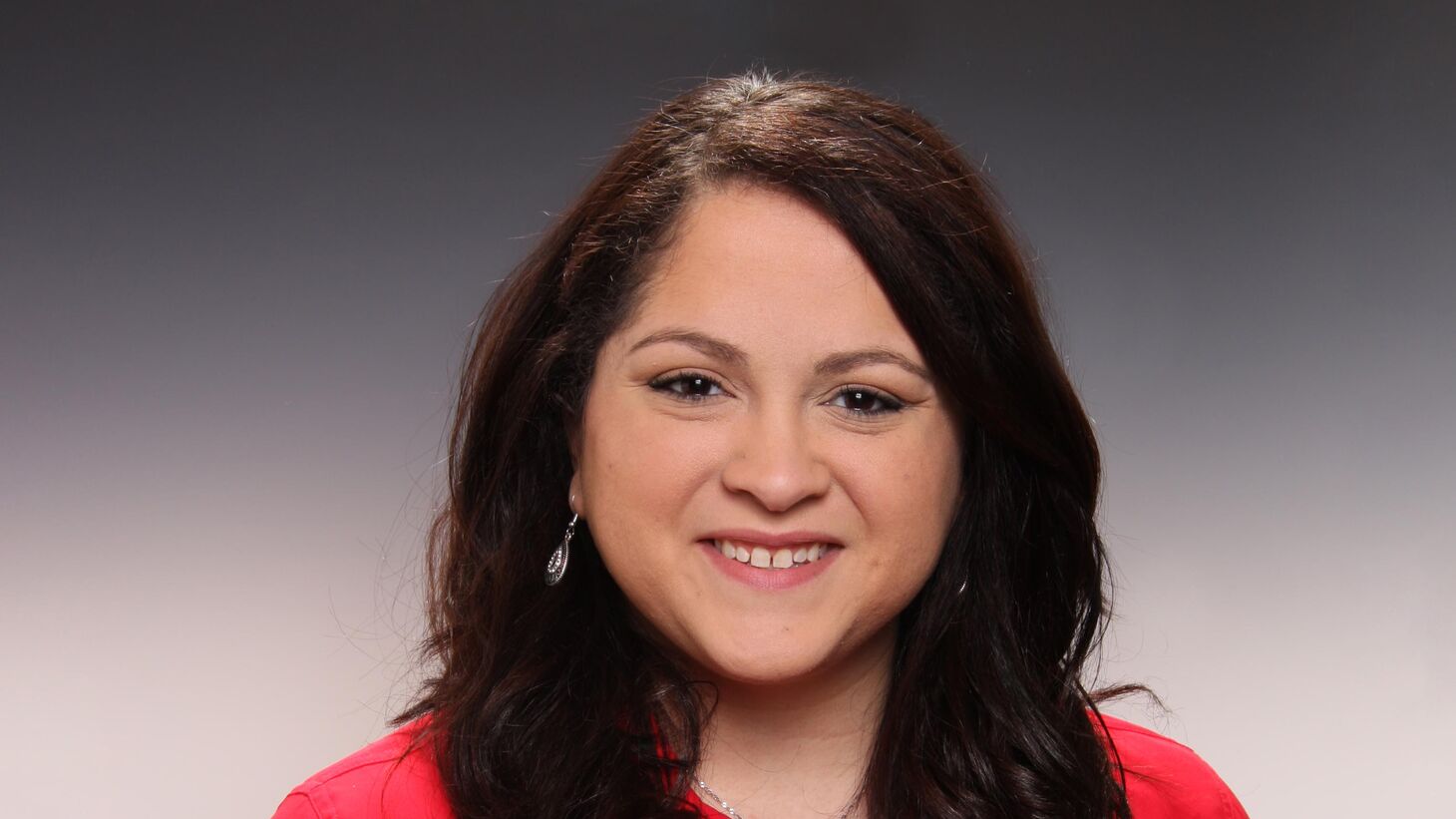
Community Outreach and Engagement Spotlight
April 2025: Jessica Fritter, DHSc, MACPR, ACRP-CP
Brief description of your community-engaged work:
The clinical research professional (CRP) workforce is facing a significant shortage amidst high demand. To tackle this challenge, I have partnered with the Workforce Development Outreach & Initiatives department to introduce clinical research as a career option to students across elementary, middle and high schools.
To further nurture future talent, we have joined forces with the Clinical and Translational Science Institute, Columbus State Community College and Nationwide Children’s Hospital to launch an exciting clinical research summer camp. This camp is designed for rising sophomores and juniors from local high schools and aims to provide an immersive, hands-on learning experience.
Participants will delve into the history of clinical research, understand the intricacies of conducting research, and even create their own research projects. They will have the unique opportunity to present their findings to industry professionals, gaining invaluable insights and feedback.
Given the scarcity of camps focused on clinical research and the limited literature on high school programs targeting the CRP role, we will conduct thorough evaluations. These evaluations will gather feedback from both camp staff and participants, assessing the effectiveness of the camp, identifying facilitators and barriers, and understanding participants' learning experiences and suggestions for improvement.
Additionally, we will evaluate the financial aspects of running the camp to ensure its sustainability and to develop a comprehensive publication. This publication will include a "toolkit" of camp materials, enabling others to replicate and build upon our success.
Why is engaging the community important to you and your work?
Most clinical research professionals ‘fall’ into this field. They do not know it exists and how to start a career or maintain one. Starting the conversation early with students at all educational levels and other organizations is imperative to growing the clinical research profession.
What lessons have you learned from the community that have helped you as a university faculty or staff member?
I have learned the importance of outreach. Communication has always been my strong suit but not necessarily speaking up in the moment. Working with this community has shown me that if you do not practice outreach and speak up when there is a need or something needs further explained, you will forever have a feeling of ‘what if.’
What has been your favorite moment from your community-engagement work?
My favorite moment by far has been reporting on the number of high school students who applied to our clinical research summer camp. We went into this pilot project knowing we should cap the number of students to around 30, but were nervous if we would even have 30 applicants. When the application closed, we had 100 applications!
What advice do you have for other faculty or staff members who are interested in getting involved in community engagement?
Embarking on the journey to bring your idea to reality can feel overwhelming. Putting your thoughts on paper and finding the right community leaders to collaborate with might seem daunting. However, once you take that first step, you'll discover lifelong collaborators who share your passion. Please do not hesitate to ask questions and reach out to fellow community engagement enthusiasts. I have found everyone to be excited to share their best practices and lessons learned. Truly embrace the process, and you'll find that the support and insights you gain from others will be invaluable in turning your vision into reality.
Archive
- February 2025: Jodi Ford, PhD, RN, FAAN
-
Brief description of your community-engaged work:
Our research project, "Building Social and Structural Connections for the Prevention of Opioid Use Disorder among Youth Experiencing Homelessness: A Randomized Controlled Trial Examining Biopsychosocial Mechanisms," is an interdisciplinary research project funded by the National Institutes of Health, National Institute on Drug Abuse Helping to End Addiction Long-term® Initiative (HEAL).
In partnership with Star House, a drop-in center for youth experiencing homelessness (YEH), youth ages 14-24 years who are unhoused and unaccompanied by an adult caregiver are engaged and randomly assigned to evidence-based interventions. Homelessness severely affects health and well-being and is particularly negative for youth. Multiple social determinants of health (SDOH) are uniquely associated with homelessness, driving substance use and adverse mental health consequences. This study tests a multi-component comprehensive prevention intervention targeting SDOH that may affect biopsychosocial health indicators and longer-term outcomes.
A total of 300 youth will be randomly assigned to substance use prevention and intervention services alone (n=80), strengths-based outreach and advocacy alone (n=80), substance use prevention and intervention services combined with strengths-based outreach and advocacy (n=80), or services as usual (n=60). The primary goal is to establish the impact of a comprehensive intervention embedded within a community drop-in center on the prevention of opioid misuse, substance use disorders, mental health diagnoses, and other targeted outcomes.
Why is engaging the community important to you and your work?
Our collaboration and partnership with Star House and youth who are currently or formerly unhoused is critical to our understanding of the lived experiences of youth, their strengths and challenges, and their insights into potential strategies that may improve youth health and wellbeing. The interventions we implement and test through our research would not be successful without this collaboration.
What lessons have you learned from the community that have helped you as a university faculty or staff member?
Early in my nursing training, I was taught the importance of listening to and engaging with the communities I serve and the need to assess individual health and wellbeing holistically. These lessons continue to be reinforced through my community partnerships today and they have strengthened my skills as a researcher as well as a teacher and mentor.
What has been your favorite moment from your community-engagement work?
I love seeing youth who are participating in our study light up with interest and ask questions about the science of the research process.
What advice do you have for other faculty or staff members who are interested in getting involved in community engagement?
To conduct community-engaged research, there are many courses and seminars on the methodology and best practices available at Ohio State and beyond, and it is important to remember that it takes time to develop trusting and successful academic-community partnerships – consistent with most relationships in life!
- May 2024: Kate Gawlik DNP, APRN-CNP, FAANP, FAAN, FNAP
-
Brief description of your community-engaged work:
In 2012, I pioneered a free online educational program, the Million Hearts Fellowship (MHF), for nurses, nursing students, and transdisciplinary health professionals. The MHF is an educational and clinical application program that requires participants to watch a series of lectures and then complete 10 cardiovascular screenings called “Million Hearts screenings” in their community or practice setting. Participants input de-identified data from the individuals they screen into an online survey, allowing data tracking of the number of people reached and their demographic and biometric information. Participants then complete a post-test and obtain a certificate, acknowledging them as a Million Hearts® Fellow. Currently, 180 academic institutions across the nation have partnered by using the MHF. These institutions are using the module to train their students and as a way to facilitate community outreach and promotion of population cardiovascular health. This program has led to the uniform cardiovascular screening of over 105,000 people across the nation. It has identified over 30,000 patients with pre-hypertension and over 18,000 patients with hypertension. Over 70,000 patients have received cardiovascular risk reduction education and over 48,000 referrals have been made for follow-up visits with a clinician for abnormal findings.
Why is engaging the community important to you and your work?
Cardiovascular disease is the number one cause of death for both men and women worldwide; however, it is largely preventable. By going out in the community and educating people about lifestyle and preventive measures they can start doing NOW, we can prevent so many heart attacks and strokes. We can also catch undiagnosed hypertension and hyperlipidemia and provide people with resources that they normally would not be aware are available to them.
What lessons have you learned from the community that have helped you as a university faculty or staff member?
Integrating our students into community settings is a valuable experience both for our students and our community members. I feel strongly that students at all levels need to understand the value of giving their time and expertise back to their communities.
What has been your favorite moment from your community-engagement work?
Finding students who are passionate about community health has been very exciting to see. They can immediately see how they helped someone or possibly caught something like hypertension that the person was not aware they had. They are able to see that they made a difference to that person.
What advice do you have for other faculty or staff members who are interested in getting involved in community engagement?
Nurses are the best resources for community engagement. We are the most trusted profession year after year. We can improve the health of our local communities in small ways, which is part of why I have loved working with the Million Hearts initiative. Anyone can go into their personal settings – churches, barbershops, synagogues, professional and community organizations – and do screenings and education to improve the health of their smaller communities.
- March 2024: Kayla Herbell, PhD, RN
-
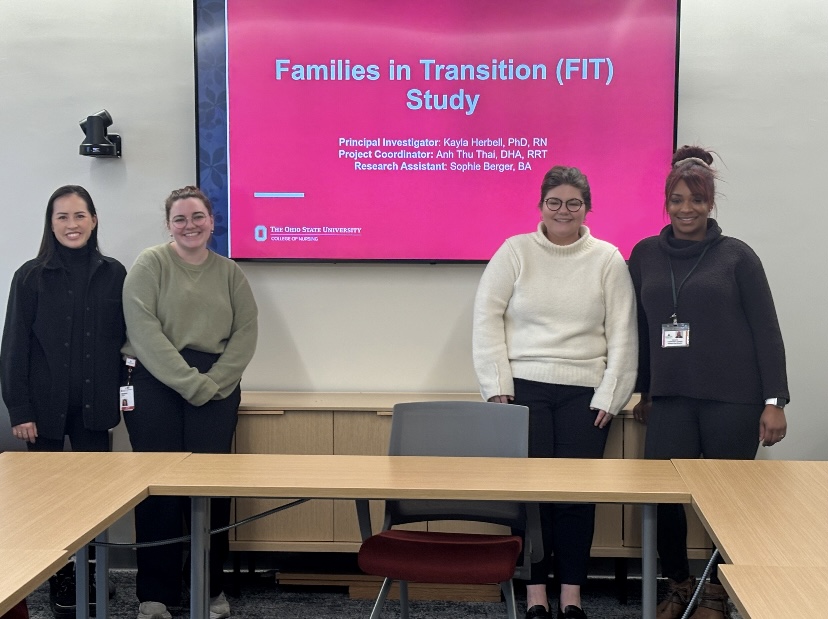
Brief description of your community-engaged work:
My research focus is on youth with serious emotional and behavioral challenges and their families. Specifically, my research takes place in residential treatment settings, which is one of the most intensive, lengthy and costly psychiatric interventions available to high-risk youth. I began working with these youth and their families as a staff nurse early on after graduating with my BSN. In my role as a staff nurse, I remember trying to find evidence-based interventions that I could implement to support the highly distressed families and coming up empty handed.
Because of this experience, I am an intervention scientist who co-develops programs in partnership with stakeholders including families, youth, clinicians or staff, and policymakers. My research program focuses on two interventions developed for residential treatment settings: Parenting Wisely for Residential Treatment (PWRT), a hybrid group-based behavioral parent training program and Resilient Families, a parent peer support program.
Why is engaging the community important to you and your work?
My work is completely driven by family voice and choice, clinician wisdom and the realities of current policies and funding constraints. In nearly every study I have done, I have partnered with the community to drive the research question, study design, and more recently, intervention design and outcome selection. Partnering with the community has been personally fulfilling in that I feel like I am actually making a difference in the population that I love to work with.
What lessons have you learned from the community that have helped you as a university faculty or staff member?
The biggest lesson I have learned is that I am not the expert when working with the community — they are. In all of my work and programming the pervasive message is “parents are the expert on their child”. This message is operationalized through partnering with parents on studies, tailored interventions based on parent needs and preferences, and prioritizing family voice and choice at the center of my research and advocacy. I firmly believe that the community has the answers but it’s a matter of listening to them and figuring out a way to test their solutions in an empirical way.
What has been your favorite moment from your community-engagement work?
One of the interventions that my team (parents/caregivers, clinicians, researchers) and I co-developed is Parenting Wisely for Residential Treatment (PWRT), a hybrid group-based behavioral parent training program. After the first pilot test of the program, we had a focus group in which we asked parents to report out on aspects of the program that they liked and didn’t like. I remember being so nervous and thinking to myself: What do I do if they hate it? The parents were overwhelmingly positive in both their quantitative and qualitative responses and their primary criticism was that while the program had allowed them to build a community and feel accepted — they felt that the five-week program wasn’t long enough and that they wanted ongoing support. I remember feeling immense relief and going back to the drawing board energized and ready to figure out how to continue to support these families.
What advice do you have for other faculty or staff members who are interested in getting involved in community engagement?
One of the most helpful things for me when I was new faculty at Ohio State was to go on a “visiting tour” where I visited other departments, community agencies, clinics and policymakers while also attending community events (e.g., behavioral health fair). The purpose of the visiting tour was to learn about what others in the same space as me were doing and what gaps they were seeing that might be amendable for research. The visiting tours were not about me educating the community about the research I was doing but rather it was to understand what they were working on and where we might overlap and collaborate.
- January 2024: Dianne Morrison-Beedy, PhD, RN, FNAP, FAANP, FAAN
-
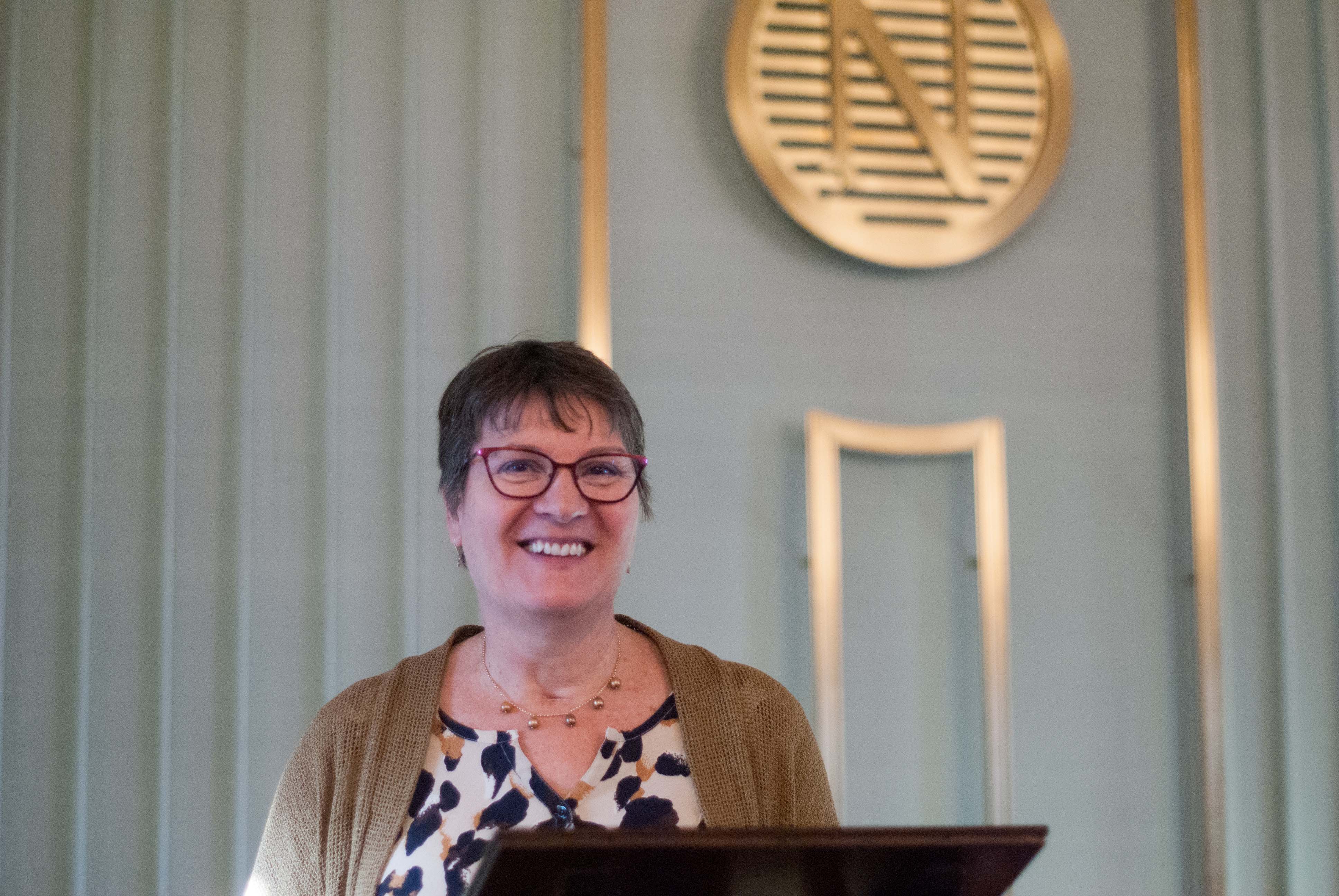
Dianne Morrison-Beedy, PhD, RN, FNAP, FAANP, FAAN
Centennial Professor of Nursing
Chief Talent and Global Strategy OfficerBrief description of your community-engaged work:
In my role as Chief Global Strategy Officer for the college, I am a builder of relationships, teams, programs, and ideas. I identify and grow potential international partnerships and build upon those we have in place to develop broader and deeper joint ventures that range across education, research, and practice. Academia in general, and this university and our college, recognize that creating global citizens is a key responsibility of higher education, and providing students access, both face-to-face and virtually, to people and experiences across the globe are high-impact learning approaches. Similarly, these opportunities facilitate faculty recruitment, retention, and development. Both local and global communities benefit when students and faculty enter relationships with them with a wider lens of understanding and a true bilateral approach to partnerships that considers diverse approaches and needs across peoples of different cultures, backgrounds, and world views. Our goal is to increase access in various ways to international communities, bringing the world to our students and our students to the world. Through clinical experiences, joint research projects, virtual exchanges, education collaborations, and training and entrepreneurial activities, we promote health equity to improve the health and well-being of communities near and far.
Why is engaging the community important to you and your work?
My initial work with communities stemmed from my research in sexual risk reduction and health promotion in disenfranchised, impoverished communities integrating community-based participatory approaches. My passion for, and commitment to, relationship building led me to connect with global communities for research, but it quickly developed into other initiatives as I could quickly identify and capitalize on opportunities to build bridges and improve educational and health outcomes outside of my area of research. We need to spread the word that nursing offers opportunities for making the world both a better place and a bit smaller and more personal. Opportunities abound for nurses, researchers, and educators to grow as global citizens while transforming health through community partnerships.
What lessons have you learned from the community that have helped you as a university faculty or staff member?
I have learned that we are more alike than we are different, and once you establish trust in relationships with community members, together you can come up with impactful, knock-your-socks-off ideas that really make a difference. Small ideas or projects grow with the enthusiasm and commitment of team members that fertilize new ideas. Everyone brings something to the table and recognizing each other’s strengths, experiences, and worldview is what builds successful partnerships across local and global communities.
What has been your favorite moment from your community-engagement work?
I have been blessed to have traveled all over the world to work with so many diverse communities developing strategic, impactful educational opportunities, research projects, and business ventures. What has been most important to me is that along the way these communities, these colleagues, have become my friends. Connecting and sharing with them on a personal, not just professional, level has provided me with a lifetime of memories.
What advice do you have for other faculty or staff members who are interested in getting involved in community engagement?
Say “Yes!” There are many opportunities for students, faculty, and staff to be part of these life-changing global community experiences. Bring your creative spirit, your spark of enthusiasm, and join our ever-growing group of global innovators. One person can have a huge impact on “glocal” communities (that’s global + local), but it starts with an interest in learning from, and with, others and wanting to make the world a better place using the talents you have been given.
- November 2023: Reproductive Health Education for Adolescents Event
-
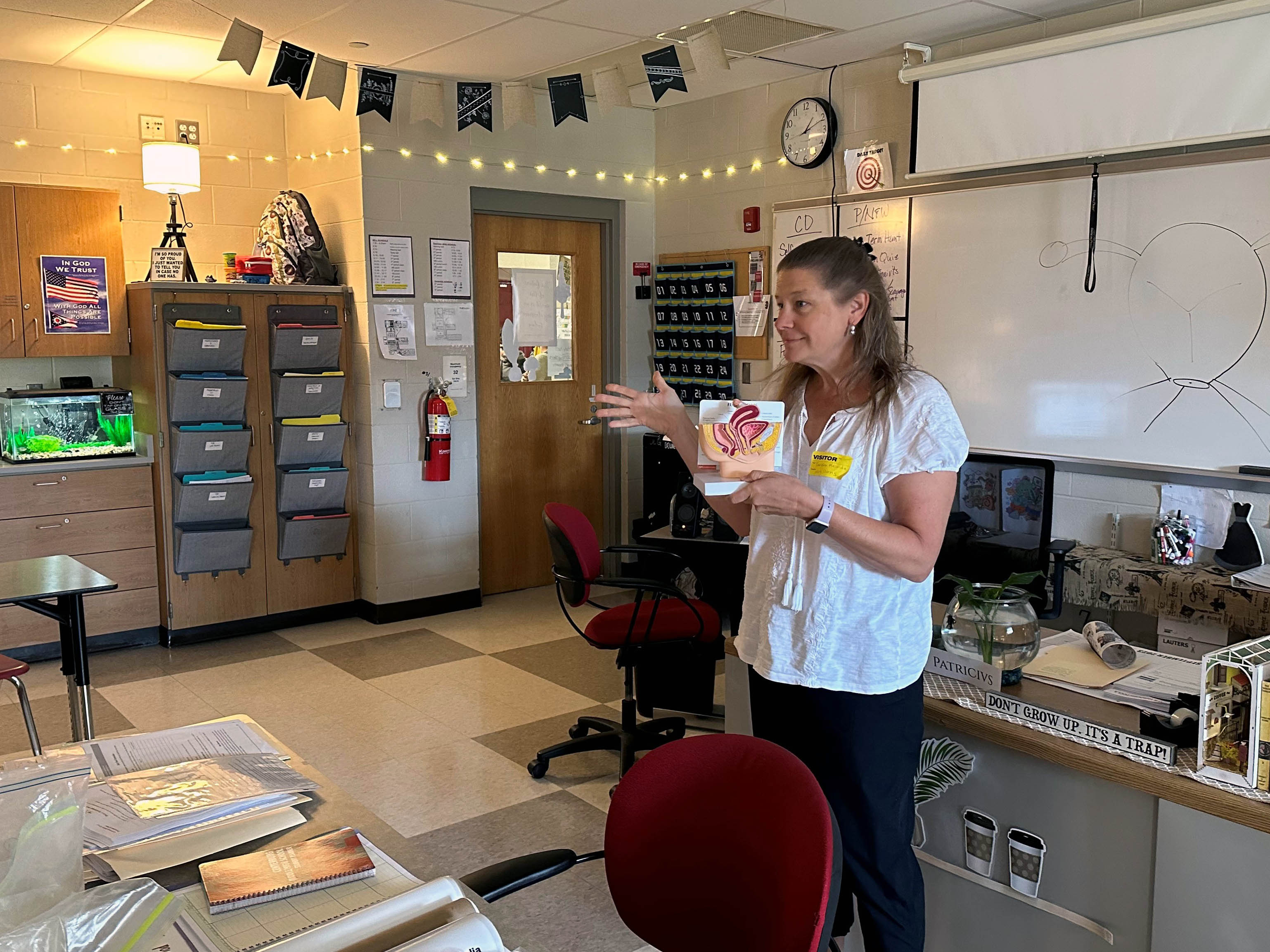
Randee Masciola, DNP, APRN-CNP, WHNP-BC, FAANP
Associate Clinical Professor
Director, DNP ProgramBrief description of your community-engaged work:
I offer a 45-minute lecture on important reproductive health topics in screening, disease prevention, and family planning to local rural high school students on a semiannual basis. I also mentor high school educators on resources for most evidence-based resources for materials and teaching strategies for content that is required by Ohio State law. Sex education is mandated in the state of Ohio and schools are required to provide education on the following topics: abstinence, STD education, laws related to sexual activity with minors, healthy relationships, dating violence prevention, and personal safety and cancer prevention.
Why is engaging the community important to you and your work?
I have an expertise that is a community need and the ability to make an impact on a vulnerable population. Adolescents have a critical need for accurate information, skills, and resources on their own personal health. It is an honor to gain their trust and provide information to decrease the incidence of high-risk behaviors and increase the positive physical and mental health outcomes for our youth.
What lessons have you learned from the community that have helped you as a university faculty or staff member?
I have learned that understanding the dynamics of the public school system and building relationships with administration, educators, and staff are essential to meeting common student health goals.
What has been your favorite moment from your community-engagement work?
By far the most rewarding moments are when the adolescents feel comfortable enough to ask questions about how to advocate for their own health, how to be good consumers of healthcare services, and how to promote physical and mental health in their lives and in the lives of those important to them.
What advice do you have for other faculty or staff members who are interested in getting involved in community engagement?
Think about how your knowledge, skills, and abilities can fill a gap in your community. Where can you make an impact? Where does the community need you? Ask how you can help.
- September 2023: Karen Patricia Williams, PhD
-
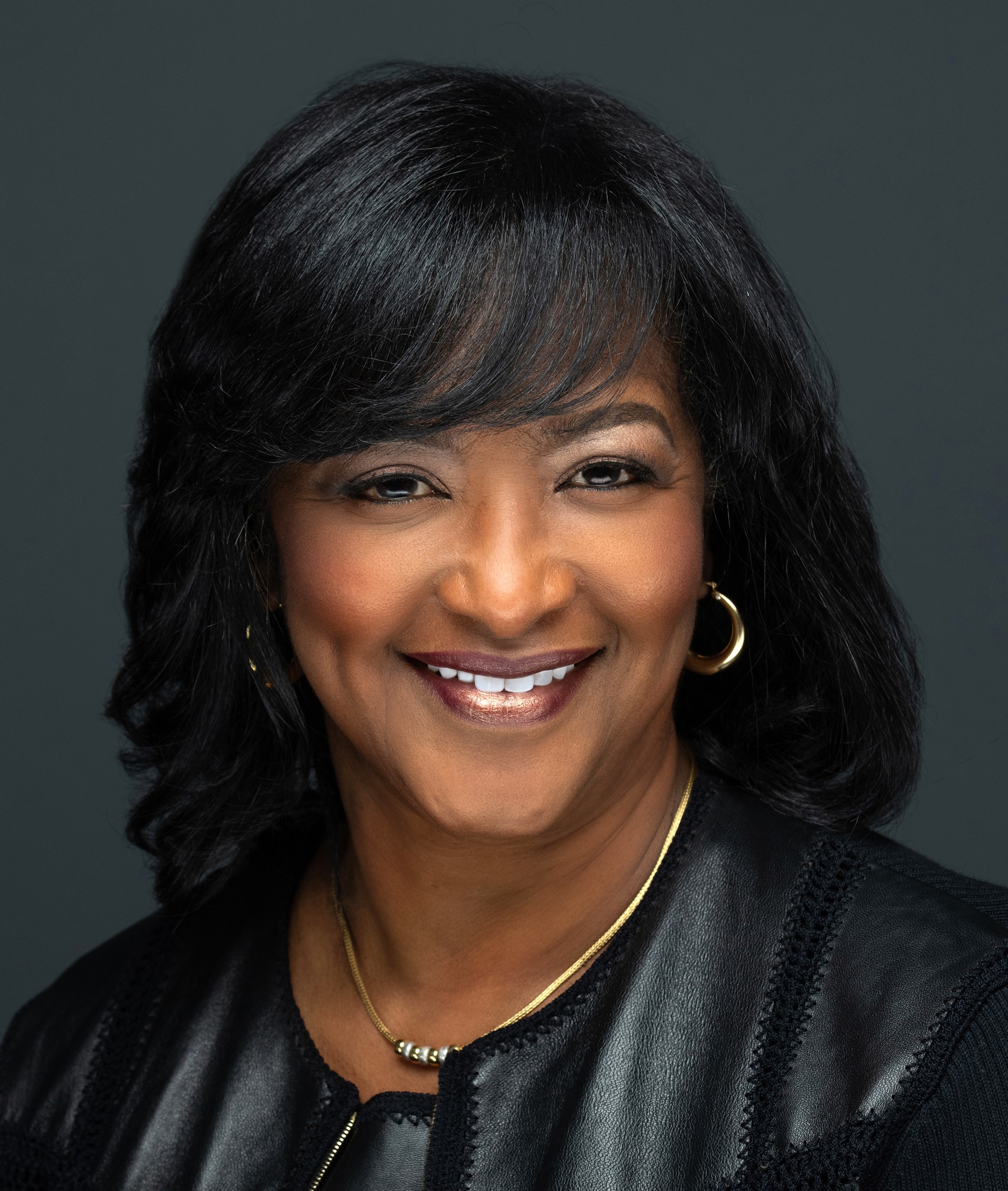 Karen Patricia Williams, PhD
Karen Patricia Williams, PhD
Director, Distinguished Professor of Women’s Health
Martha S. Pitzer Center for Women, Children and YouthBrief description of your community-engaged work:
My research has always used elements of community engagement, albeit community-based research approaches, community-based participatory research, or community-based action research. As an example, when developing the cancer literacy assessment tools, I used community-based research approaches in each of the necessary steps for developing, validating, and translating the Breast Cancer Literacy Assessment Tool and the Cervical Cancer Literacy Assessment Tool. When developing the methodology to conduct a randomized controlled trial to measure the effect of my Kin KeeperSM Cancer Prevention Intervention, I used community-based participatory research (CBPR). This was very new at the time because CBPR was not associated in anyway with a randomized controlled trial (RCT). They were on opposite ends of the spectrum, with the RCT considered the gold standard and some questioned if CBPR had rigor. The reason my team and I were able to do this and convince reviewers that we were indeed conducting rigorous gold standard research, is because of our community partners. I made a commitment to them, and they made a commitment to me and the research. We had the same partners for eight years. They understood the importance of breast and cervical cancer prevention. We had double loop learning. My university-based team taught our community partners the difference between research and programming, they taught us about what was real and would work in the community and what was pie in the sky. We were equal partners with different perspectives but had the same goal, breast and cervical cancer prevention and control.
Why is engaging the community important to you and your work?
Including the community in my work provides marginalized women with a voice, and it keeps me grounded.
What lessons have you learned from the community that have helped you as a university faculty or staff member?
As a faculty person, I must keep in mind that I am an outsider and that the community always must vet me, even though I might look like them or be in the same church denomination. I am an outsider that represents the university. While I might be more accepted than someone else, they are going to still vet me, to see if I am the type of faculty who conducts drive-by research or am I committed and what is the evidence that proves that I am committed. That is their job — to be the gate keepers.
What has been your favorite moment from your community-engagement work?
At one of our retreats, a community health worker told the story about her Breast Cancer Home Visit with a family (all women). One of the women said she had a lump in her breast for a long time but was afraid to tell anyone. After the Kin KeeperSM education intervention, she felt empowered and was ready to move forward to get her mammogram. When the community health worker finished the story, I knew this was bigger than me.
What advice do you have for other faculty or staff members who are interested in getting involved in community engagement?
You must be committed to the people and the cause. It is time consuming and can be frustrating, but it is important work.
- May 2023: Chris Fortney, PhD, RN, FPCN
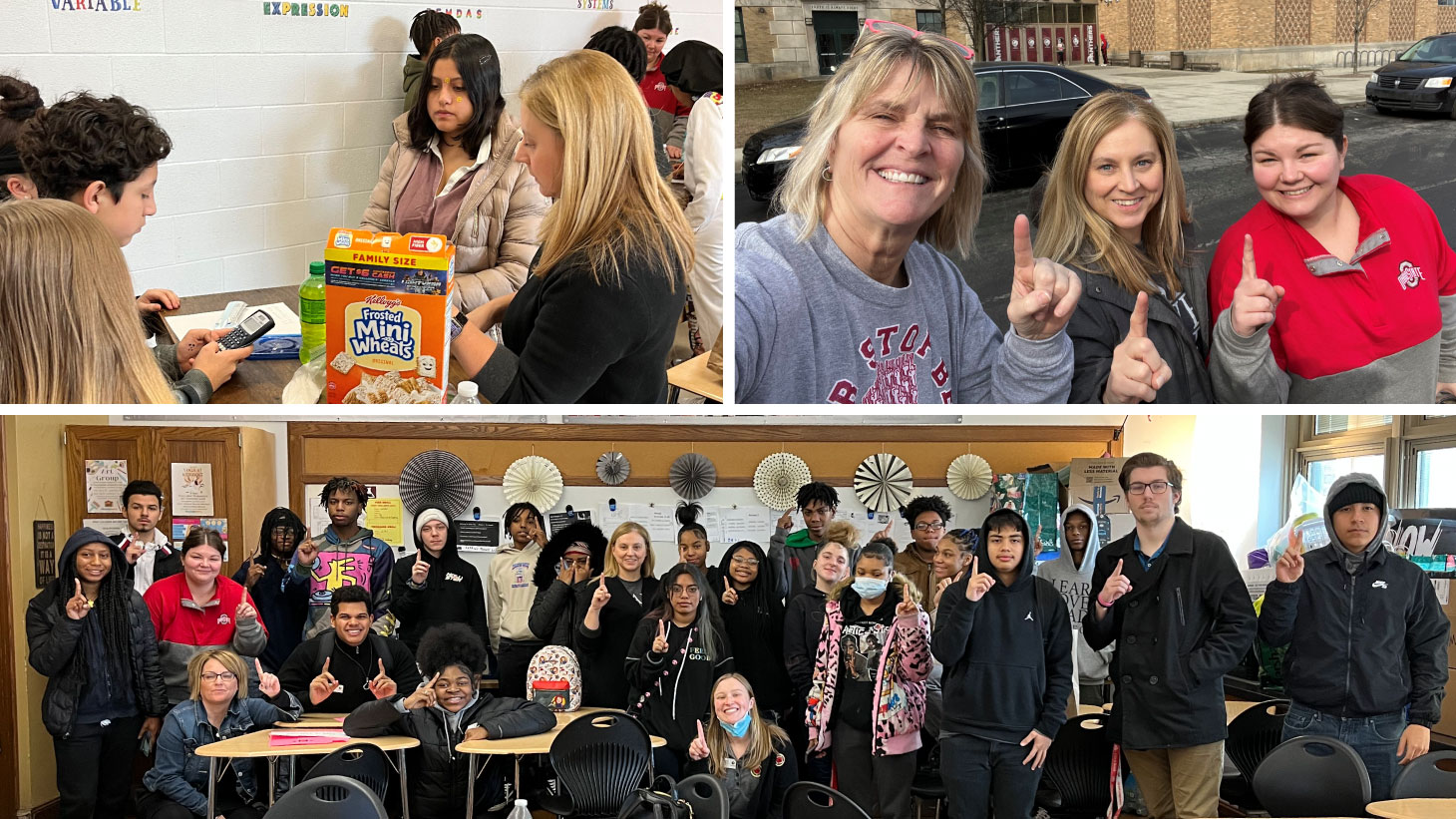
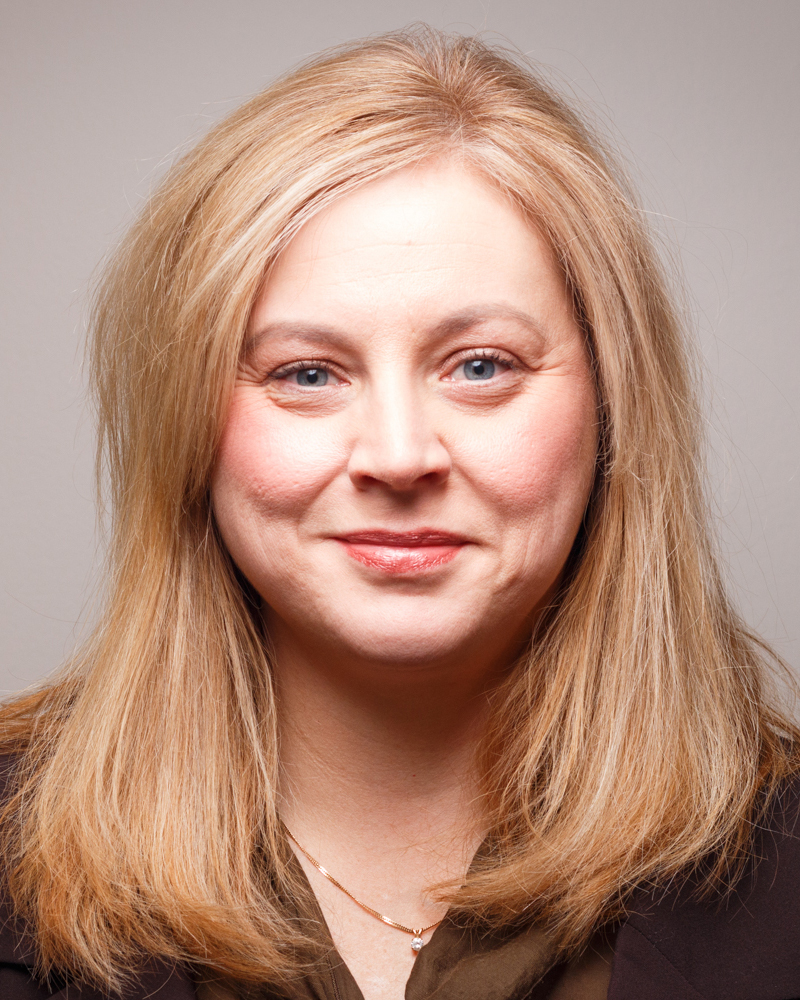 Chris Fortney, PhD, RN, FPCN
Chris Fortney, PhD, RN, FPCN
Assistant ProfessorBrief description of your community-engaged work:
In April 2015, a teacher in the Columbus Public Schools began meeting with at-risk high school students after a tragic shooting occurred in their school parking lot. She hoped to show students that by helping others and making good choices, they could change the world for the better. BE THE ONE was born and they set out on a journey of service and self-discovery. But community partners were needed for success. In the Fall of 2018, health education was an identified need and a partnership with BE THE ONE, Sigma, Epsilon Chapter, and The Ohio State University College of Nursing began. Two teams of faculty – one at Walnut Ridge and one at Linden-McKinley – were formed. Lectures and interactive activities provide information on topics such as Hand washing, Mindfulness, Nutrition, Physical Activity, and Mental Health. The College of Nursing’s Office of Community Outreach and Engagement and the Community Health Worker Program have supported service activities, and recently delivered Stop the Bleed training. During our visits, students are given concrete health information and empowered to take control of their health and to advocate for their well-being. Consistent faculty partners have enabled the broadening of support that is offered because we know well the needs of the students and their teachers.
Why is engaging the community important to you and your work?
Engaging with the community is a vital activity for all of us because it helps break down barriers and build trust, especially when we work together toward a common goal…even when we don’t always agree on the best way to achieve that goal. We must respect each other, share knowledge, draw from one another’s strengths, and build bridges to foster the right opportunities at the right time for all who need them.
What lessons have you learned from the community that have helped you as a university faculty or staff member?
I have learned about the issues and concerns facing our community in much greater depth. I now understand that there may be many different viewpoints from my own that must be considered when seeking solutions to problems. Every voice deserves to be heard. I also have learned that so many struggle with situations that I can never begin to comprehend, but through compassion and kindness, I can brighten someone’s day.
What has been your favorite moment from your community-engagement work?
In April 2019, the BE THE ONE students came to Ohio State’s campus for a visit. Speakers from the College of Nursing, Wexner Medical Center Human Resources, and the Hale Cultural Center gave students information on the College of Nursing, the Community Health Worker program, Diversity, Equity, and Inclusion initiatives at OSU, information regarding job opportunities at OSUWMC at every education level, as well as pathways to college. Lunch was provided and OSU Football players were on hand to give autographs. We had a wonderful day connecting with the students!
What advice do you have for other faculty or staff members who are interested in getting involved in community engagement?
In 2009, I became a founding member of the Harmony Project, a Columbus organization that strives to build a stronger and more inclusive community through the arts and volunteer services. I was introduced to partners and service organizations that were lifting up and supporting the needs of those in many sectors across the community, including programs serving schools, the prison system, and differently-abled adults. I worked side by side with others who didn’t look like me, but who had a similar calling to serve. Once this awareness in me was raised, I began to see other potential opportunities. The best advice is to pick a service opportunity that speaks to your heart and opens your mind and then let it grow. Go where you are called even if it is outside of your comfort zone.
- March 2023: Holly Jones, PhD, RN, APRN-CNP, RNFA
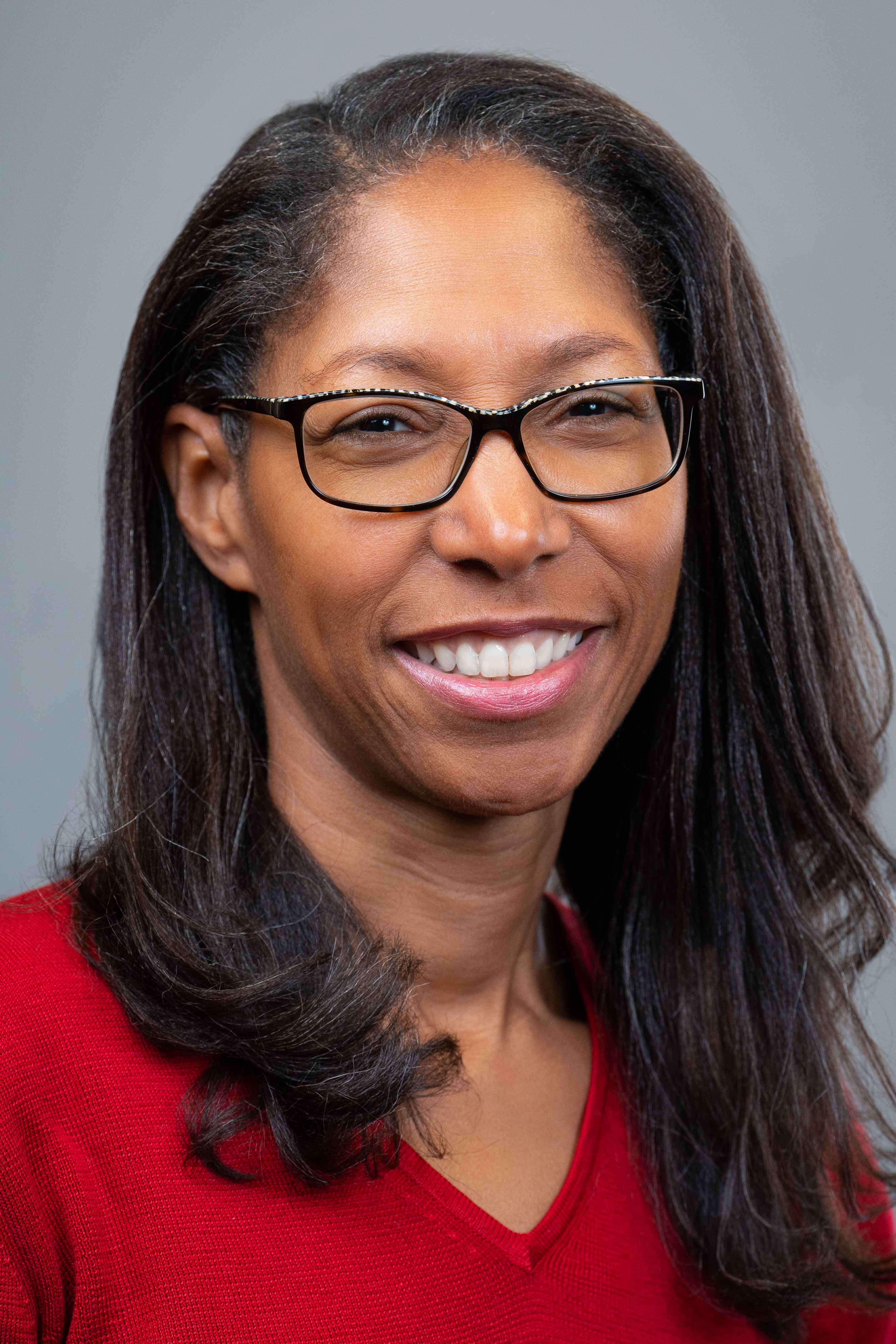 Holly Jones, PhD, RN, APRN-CNP, RNFA
Holly Jones, PhD, RN, APRN-CNP, RNFA
Associate ProfessorBrief description of your community-engaged work:
Why is engaging the community important to you and your work?
Service has always been at the heart of my nursing practice. As a nurse scientist, community-engaged research gives me an opportunity to engage with a common purpose: decreasing health disparities. The rich history and wealth of knowledge that lives within our communities is often underestimated by the academic research community. The collaborative process that we used to co-develop the B-SWELL program gave voice to midlife Black women and their lived experiences. The ideas and suggestions that were generated resulted in a uniquely tailored program that appeals to midlife Black women across socioeconomic levels.
What lessons have you learned from the community that have helped you as a university faculty or staff member?
I did not receive formal training for community engaged research in my doctoral program. My experiences have taught me that research can be creative and remain rigorous. Community researchers have pushed me to think outside the box and this has enhanced my research from start to finish. I believe that collaborations between academic researchers and community researchers will help us solve some of the more challenging health issues that exist today.
What has been your favorite moment from your community-engagement work?
The creation of our B-SWELL program was very special. But I am also very proud that we co-authored an article that highlights our collaboration. The article provides details and recommendations that can assist future community engaged projects. It was published in the International Journal of Environmental Research and Public Health.
What advice do you have for other faculty or staff members who are interested in getting involved in community engagement?
Be prepared to receive an abundance of wisdom, information, and suggestions from your community partners. Community researchers want to see their communities thrive and will work to help you succeed.
- January 2023: Jennifer Forbush, DNP, APRN-CNP
-
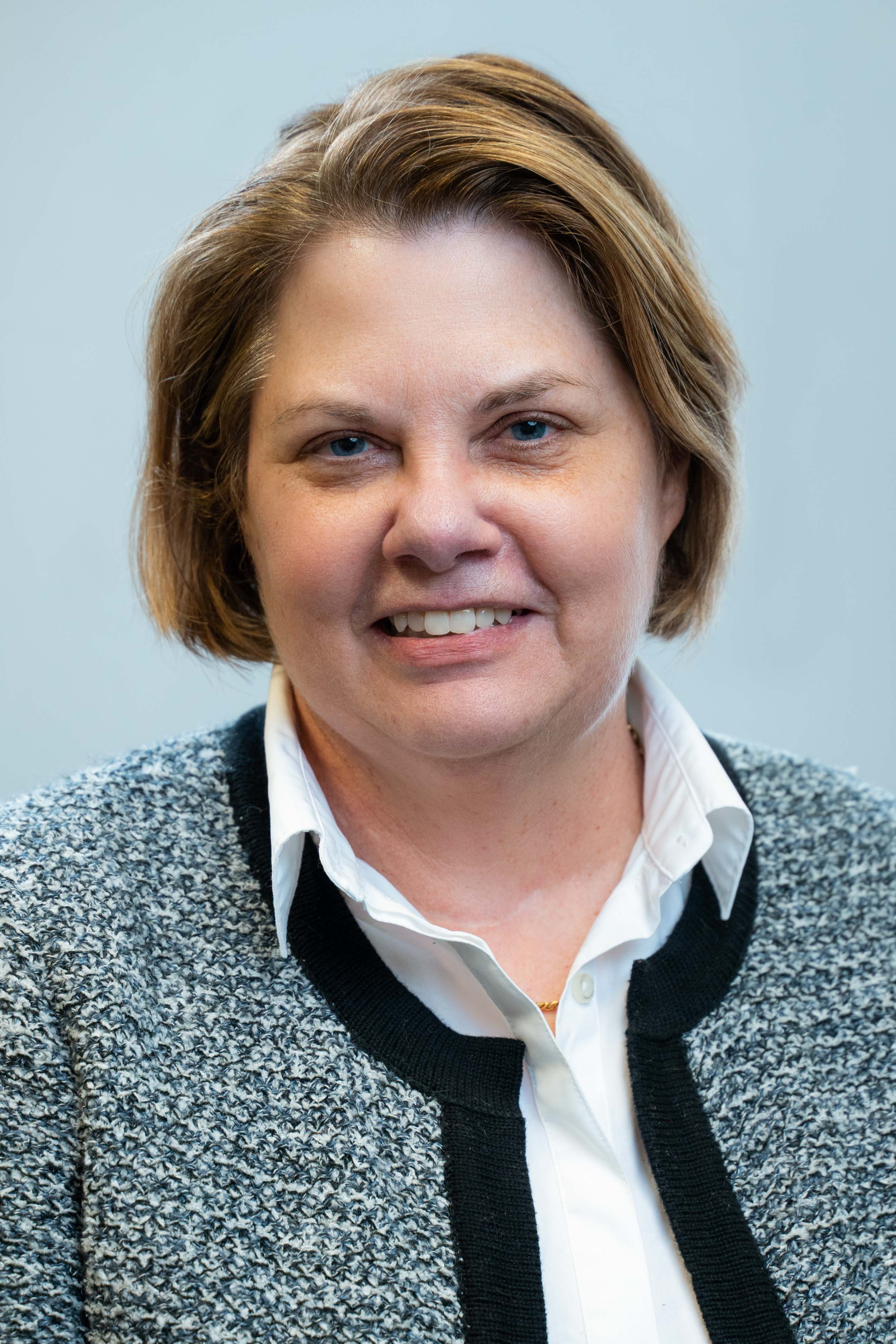 Jennifer Forbush, DNP, APRN-CNP
Jennifer Forbush, DNP, APRN-CNP
Assistant Professor of Clinical PracticeBrief description of your community-engaged work:
I have volunteered for community agencies and events throughout my 35 year nursing career. As a staff nurse, I participated in American Heart Association and American College of Cardiology committees. My first job as a Nurse Practitioner was caring for uninsured patients with HIV. As a result of the COVID-19 pandemic, like so many other health professionals, I joined the Columbus and Franklin County Medical Reserve Corps. In this role, I helped provide mass vaccinations and continue to serve when the need arises. Together with the staff and volunteers at both Franklin County Public Health, and Columbus Public Health, I teach Stop the Bleed Classes to community members and provide other community support as requested.
I transitioned from clinical practice to academia while completing my Doctor of Nursing Practice on social determinants of health. I currently teach and arrange clinical placements in the undergraduate community health course. The relationships formed while volunteering have strengthened my connection to community partners and hopefully will expand clinical opportunities for our students.
Why is engaging the community important to you and your work?
The health promotion course in my DNP program made quite an impact on my career trajectory. The US spends more on health care compared to other countries yet continues to have poor outcomes. This reinforced the notion that the future of health care should be focused on health promotion and prevention. Public health research, support, and funding is part of the solution. My hope is that our students will embrace and support this concept, if not decide to seek employment in community health.
What lessons have you learned from the community that have helped you as a university faculty or staff member?
I am amazed at the number of community resources in the central Ohio area. I look forward to collaborating with the College of Nursing and community experts to locate and combine efforts to improve the care we provide. I think we will accomplish more working as a team to identify and improve community-based care. In turn, our students will benefit from a variety of learning experiences.
What has been your favorite moment from your community-engagement work?
I think we all want to make a difference in the lives of others. As a health care provider, I felt helpless in the early months of the COVID pandemic. As vaccines rolled out, I had the opportunity to participate in mass vaccination clinics with Ohio State and the medical reserve corps. Eventually we were able to include our students and work alongside the national guard in this extremely important outreach. We influenced the outcome of a once in a lifetime (hopefully) global health crisis!
What advice do you have for other faculty or staff members who are interested in getting involved in community engagement?
There are many opportunities to volunteer for medical or non-medical roles through the college, Ohio State, or other central Ohio agencies. The Franklin County and Columbus Medical Reserve Corps is a terrific way to make a difference and protect the health and safety of central Ohio residents.
- November 2022: Courtney Shihabuddin, DNP, APRN-CNP, AGPCNP-BC
-
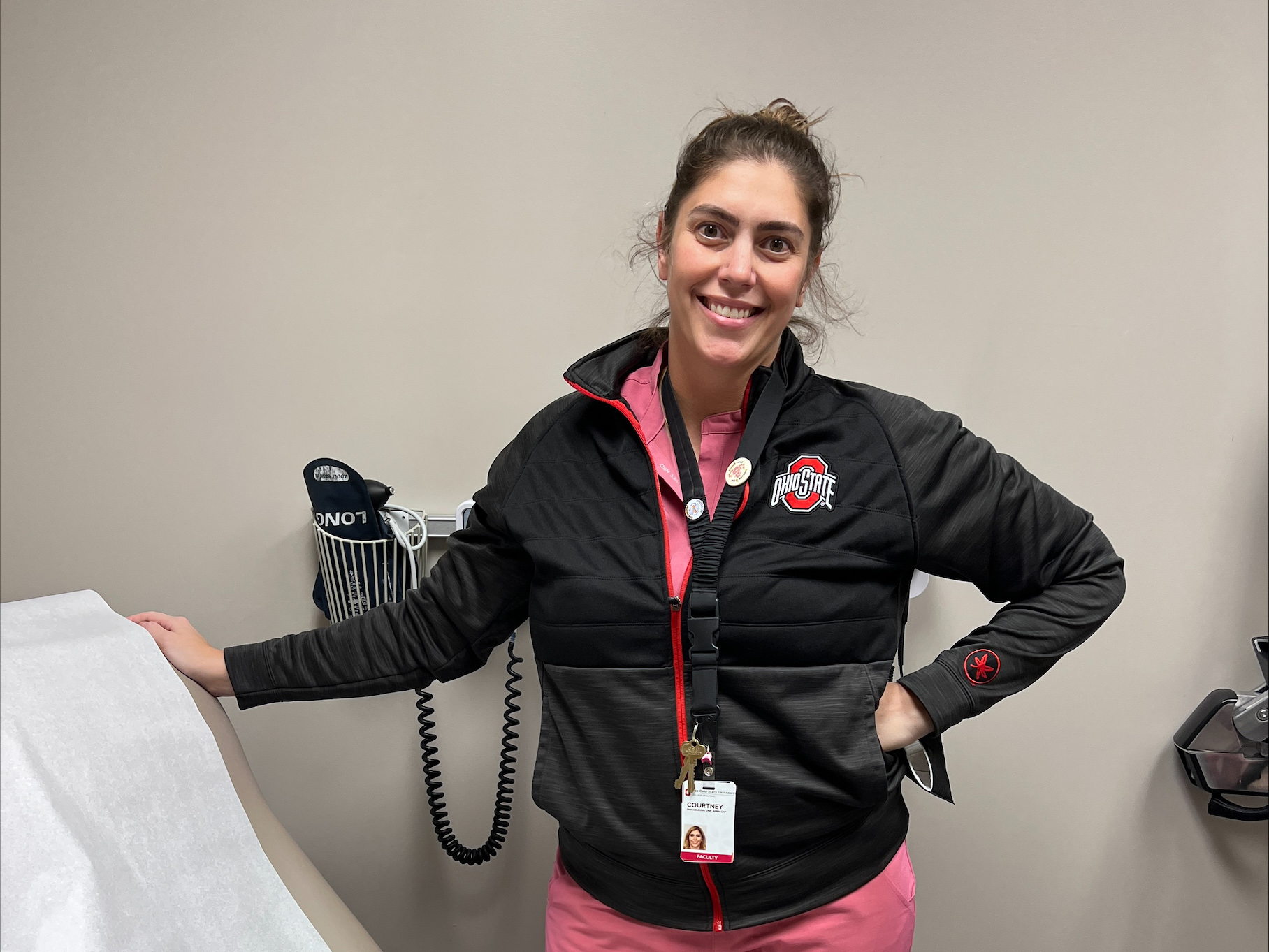
Courtney Shihabuddin, DNP, APRN-CNP, AGPCNP-BC
Assistant Clinical Professor
Director, Adult-Gerontology Primary Care Nurse Practitioner Program
Director, Adult-Gerontology Clinical Nurse Specialist ProgramBrief description of your community-engaged work:
I work as a nurse practitioner at the Columbus Free Clinic where I precept medical students (first and four years), as well as PA students and my own adult-gerontology primary care nurse practitioner students. I also serve on the board of the Columbus Free Clinic and am the faculty mentor for the Rainbow Clinic where we exclusively treat members of the LGBTQIA+ community.
Why is engaging the community important to you and your work?
Prior to working at Ohio State, I worked as an HIV specialist in a Ryan White HIV Clinic in Oklahoma City, OK. I truly adored my work there, treating that underserved population, and I knew when we relocated to Columbus, that I wanted to stay engaged in the community, helping to provide care for populations that would benefit from it most – the uninsured and under-insured. My work at the free clinic has allowed me to see my students learn and grow, not just in the classroom, but I’m able to see their clinical application of my teaching in the real world, with real patients, and that’s magical.
What lessons have you learned from the community that has helped you as a university staff member?
I am constantly learning about other community offerings and programs that I was unaware of prior to joining the Columbus Free Clinic. I have networked with students and faculty from other colleges which have allowed me to integrate more interdisciplinary initiatives into my everyday work, bringing nursing and medical students together, and helping to learn how to better integrate multidisciplinary plans of care to improve patient care and outcomes.
What has been your favorite moment from your community-engagement work?
I truly enjoy mentoring my students in the clinical setting. I love that I get to provide the didactic education they need to have good clinical decision-making skills, and then I get to observe that happening in real time. It’s almost like I watch the lightbulb moment when it all finally “clicks” and they are able to behave as safe and effective nurse practitioners. One other thing I love is when my NP graduates come back to CFC and volunteer as providers. It’s been an honor to see that full-circle moment.
What advice do you have for other faculty members who are interested in getting involved in community engagement?
The Columbus Free Clinic is a fantastic opportunity for APRN faculty to give back to the community and precept Ohio State students, whether they be medical or nursing students. It’s a great way to provide clinical hours for students who need them to graduate, all while giving back to our community in a way that is desperately needed by this patient population.
-
September 2022: Kathy D. Wright, PhD, RN, APRN-CNS, PMHCNS-BC
-
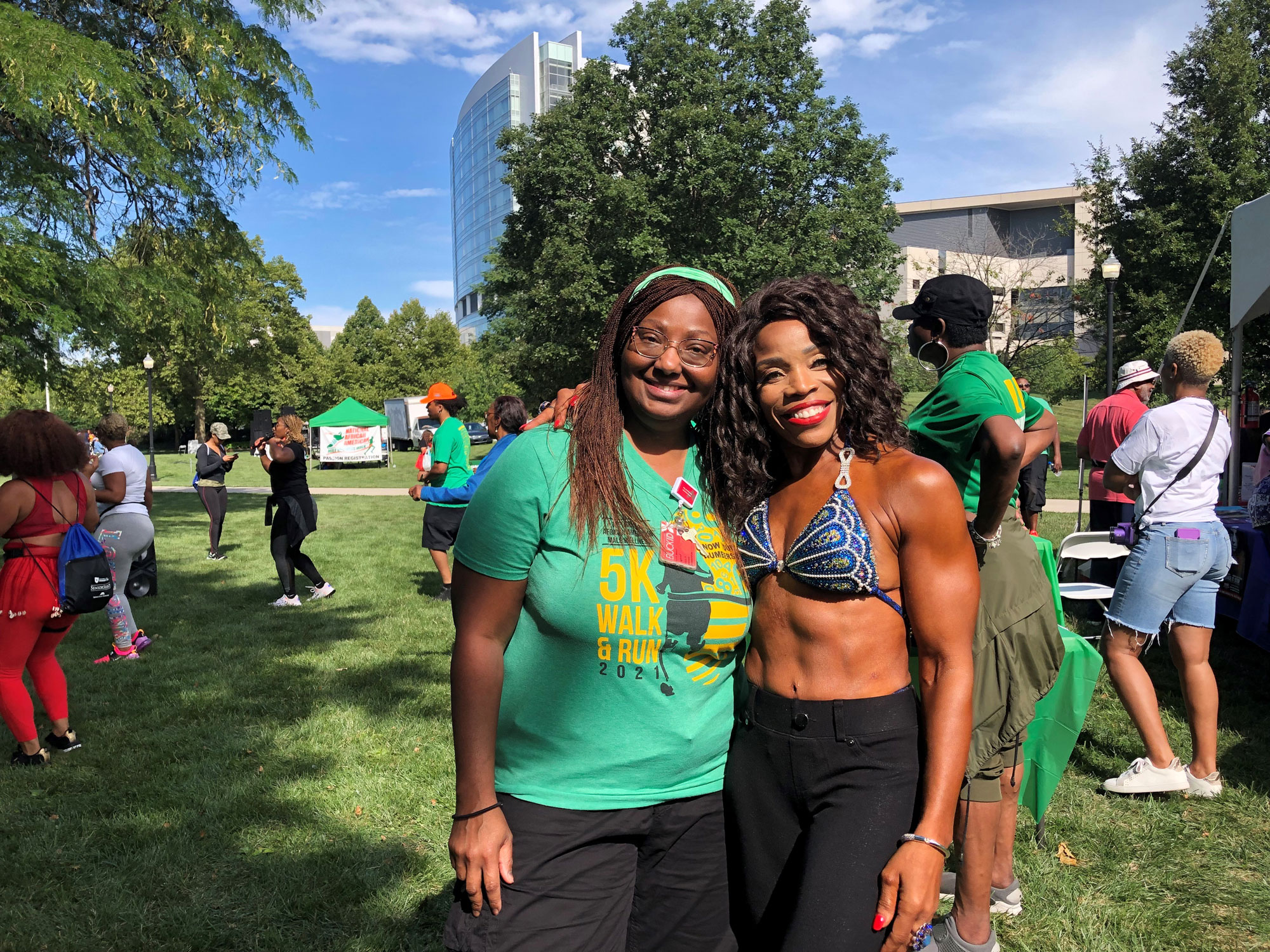
Kathy D. Wright, PhD, RN, APRN-CNS, PMHCNS-BC, Assistant Professor
Center for Healthy Aging, Self-Management and Complex CareBrief description of your community-engaged work.
My lab is the Brain and Blood Pressure Health Is Valuable for Everyone (B+BHIVE). We provide health education, mindfulness practices, blood pressure checks, and cognitive and mental health screening minoritized communities. This work is across the lifespan to reduce the risk of Alzheimer’s disease and related dementias among Blacks/African Americans and those who are from underrepresented populations, such as rural areas. We volunteer for events that include UpLift Her, African American Men’s Wellness Walk, Central Ohio American Heart Association, Urban Aging Residents Coalition, and St. James Christian Center.
Why is engaging the community important to you and your work?
Alzheimer’s disease and Related Dementias is a critical issue for minoritized groups. Indeed, Blacks and African Americans are 1) twice as likely to get dementia, 2) diagnosed too late into the course of the disease to benefit from treatments, and 3) live longer with dementia and require more physical care in the later stages of the dementia. One of the main pathways for us as African Americans to lessen the burden of dementia is living a healthy lifestyle. This includes keeping blood pressure under control, stress management, eating plenty of fruits and vegetables, mindfulness/meditation/prayer, and physical activity.
Most importantly, I have the opportunity to meet people at varying points on their wellness journey from a 62-year-old body builder [pictured above] to a person who is wheel chair bound. I teach others to give themselves grace and not compare themselves to others, or even how they may have been in the past. The focus is on what I can do today, even if it is to drink one less can of surgery soda than yesterday. Always give yourself grace and keep moving forward.
What lessons have you learned from the community that have helped you as a university staff member?
Patience and adaptability. In the community, we need to move at the pace of those we work with, not the rushed pace of academia. Also, the systems of organization may not be exactly what we expect. It is best always to observe, listen, and follow the lead of the individual/group that has invited you into their community because this is their home.
What has been your favorite moment from your community-engagement work?
The best part about working in the community is that I have many favorite moments. When you are in the community, you become a part of that family. So, one of the Elders invited me and Dr. Judy Tate to a Christian comedy show. The Elder (Ms. Pam Shields, Director of the Urban Aging Residents Coalition) requested that I bring educational materials to pass out to all the attendees. When the show started, Ms. Pam went up to the stage and asked me to join her. I was presented with a huge bouquet of flowers and a certificate thanking me for the work that I have done with her group in the community that includes a monthly mindfulness activity.
What advice do you have for other CON members who are interested in getting involved in community engagement?
We all have busy schedules and obligations for scholarship, research, and teaching. Be smart about your time and focus on one or two groups that are important to you. Start out by volunteering for a health fair or giving a talk to the community you want to foster a relationship. Be consistent. Don’t attend just once. Be available for last-minute requests and if you cannot do it, then find a colleague who can. For example, I lead the monthly mindfulness breathing exercise for the Urban Aging Residents Coalition. If I’m unable to attend, then my back up is Dr. Judy Tate or Dr. Karen Moss.
- July 2022: Karen Moss, PhD, RN, CNL
-
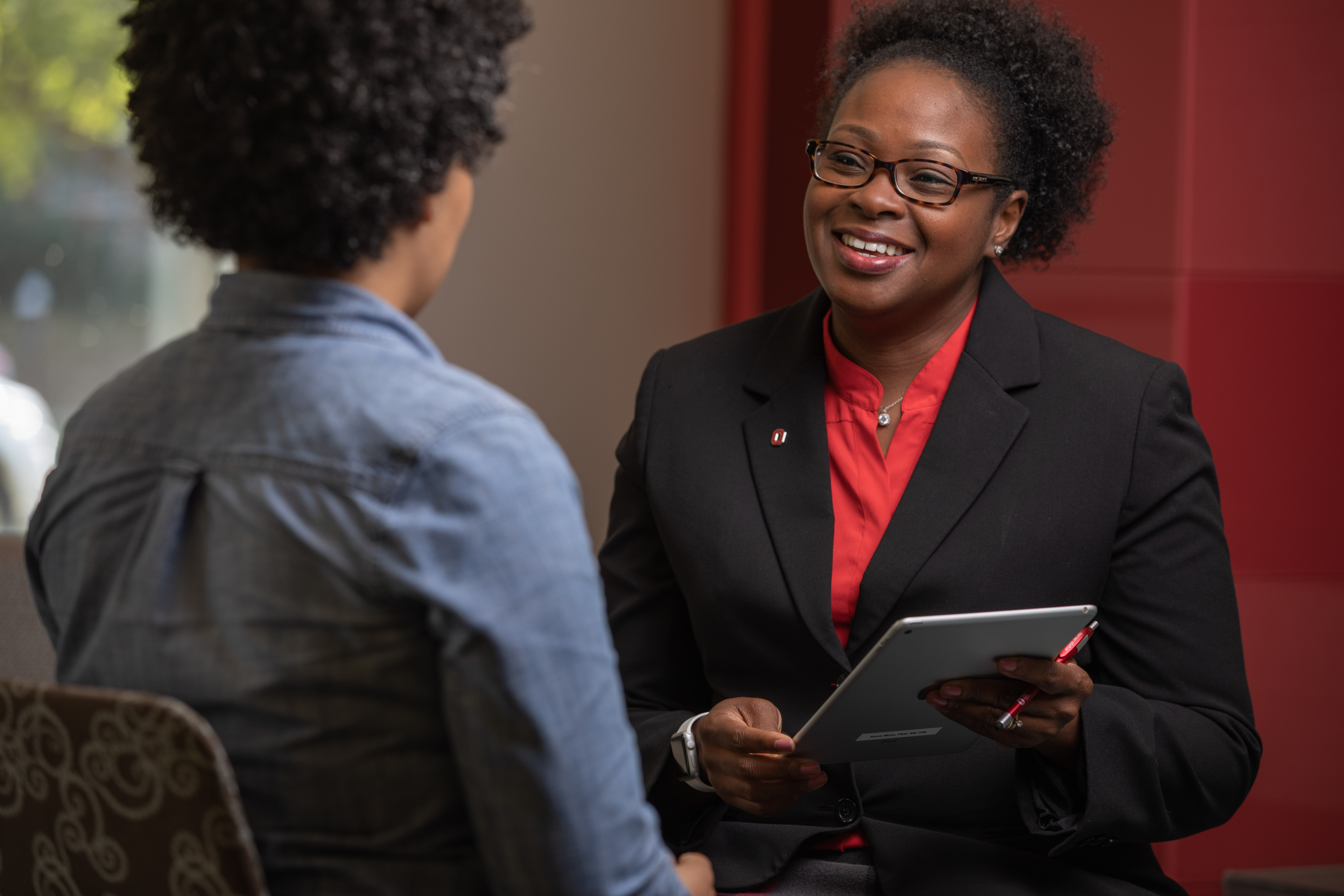
Karen Moss, PhD, RN, CNL, Assistant Professor
Center for Healthy Aging, Self-Management and Complex Care (CHASM-CC)
Center for Health Outcomes in Medicine, Scholarship and Service (HOMES)I love engaging with older adults. I am passionate and committed to improving the quality of life for African American older adults living with dementia and their family caregivers through quality advance care planning for the end of life and better pain management outcomes. Some of my current work explores barriers and facilitators for advance care planning for African American dementia family caregivers. We are also describing pain and stress in older adults living with dementia and their family caregivers. Through the conduct of my community-based research, we collaborate with members of the community through ongoing education. We allow the community to direct the focus of this work based on their needs, while educating them on the importance of advance care planning.
Why is engaging the community important to you and your work?
My work would not be possible without community engagement. I am always excited to give back to the community. Having conversations on advance care planning with community members brings me joy. To observe their curiosity and interests peak as we get deeper into honest conversations through storytelling about death and dying amazes me. Thankfully, we have been able to remain engaged in these conversations despite the coronavirus pandemic. Virtual conversations and presentations and also virtual data collection for my research have been extremely beneficial. Through community-based recruitment, we engage our study participants as my consultants as they are the experts of their own experiences as well as their needs. Therefore, community engagement is critical for my work and hence it is importance for me to remain engaged.
What lessons have you learned from the community that have helped you as a university staff member?
I have come to realize that the ‘community’ that we often describe is truly plural, “communities.” Various demographic characteristics such as gender, race, ethnicity, and geography used to describe any one individual or family helps them to be aligned with various groups/communities. I have learned that it is extremely important to listen first. Our communities (plurality intended) have lots of needs and lessons to teach us about their experiences. However, in order to learn from them, we must connect with them in nonjudgmental ways to learn how to best help them. This approach has proven beneficial to my research program. My initial research studies assessed the understanding and needs of African American dementia family caregivers by asking and then describing them. We approached this from a multi-stakeholder perspective, including healthcare providers and community leaders. Based on these findings we have designed a caregiver support program that was co-developed with and for its end users, our African American dementia family caregivers. We are excited to be on the cusp of optimizing and refining the program through testing with African American dementia family caregivers.
What has been your favorite moment from your community-engagement work?
There are many. One of my favorite memorable moments was while I was a clinical instructor for a community health nursing course. My students and I were assigned to a low-income housing community. During our time there, the students and I were deeply embedded within this community. We listened to their concerns, learned, taught, laughed, cried, ate, and danced with them during Zumba workouts. The powerful transformation observed within community members from across the lifespan as well shared by the students were priceless. It was a remarkable meeting of individuals from various race, ethnic, socioeconomic, and geographic backgrounds to learn more about each other in the absence of undue judgement.
What advice do you have for other faculty or staff members who are interested in getting involved in community engagement?
We must reconsider that fact that we are all engaged in community-based work. The patients, families, students, and faculty we engage with are all a part of various communities. Therefore, we would all be better served if we were more connected with each other in some way. I recommend that staff and faculty who are interested in community engagement take a close look at what appears to be the pressing needs in the communities that surround them. From these needs, determine which aligns best with their passion. Then seek out ways to get involved. In doing so, your passion will drive your engagement with the community, you will give it your all, and it will be more impactful. However, most importantly it will be maximally beneficial to those community members whose needs are greatest. This makes it all the more meaningful.
- May 2022: Sarah Posten, C-CHW, CPST
-
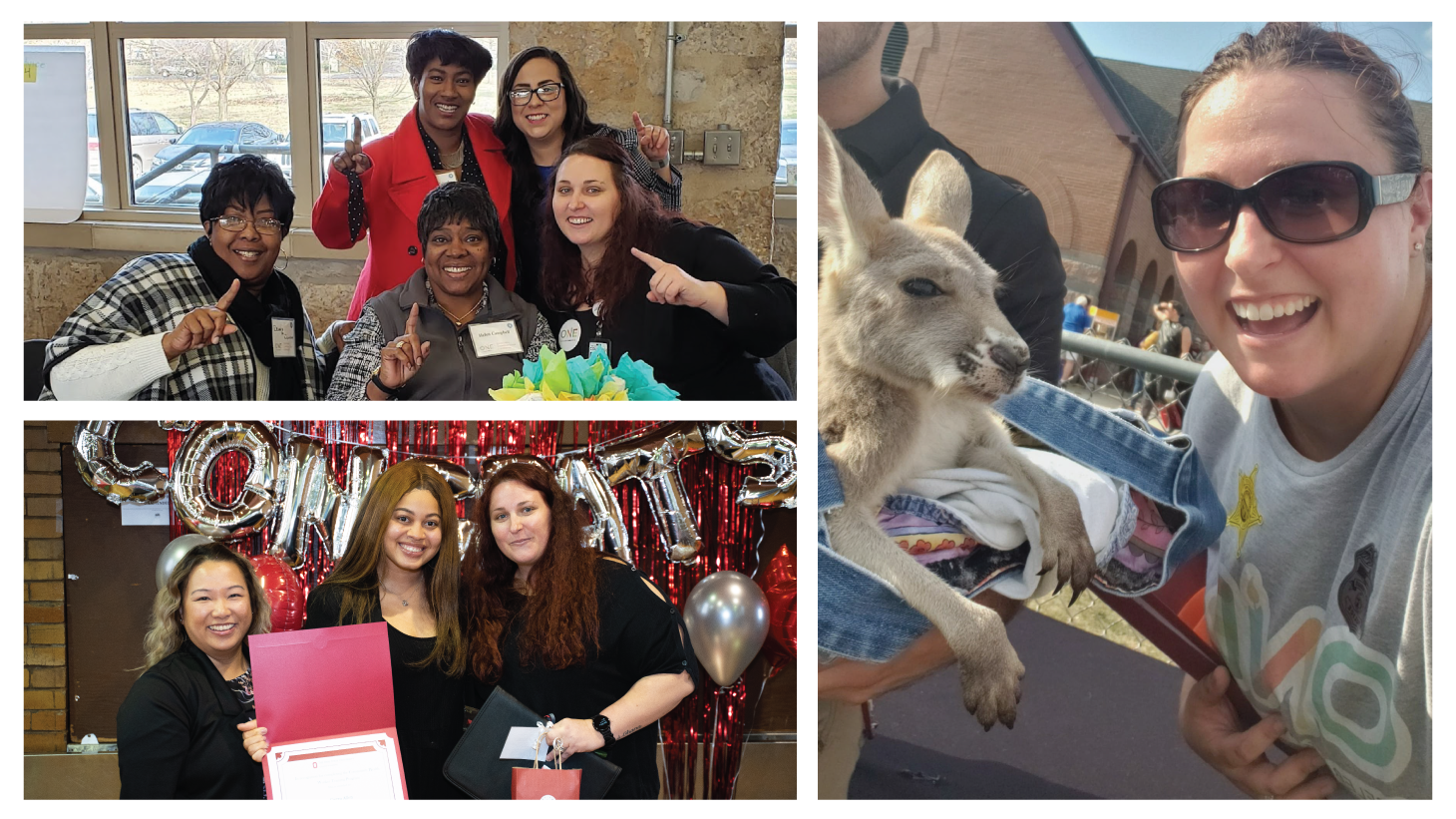
Sarah Posten, C-CHW, CPST
Clinical Practicum Coordinator
College of Nursing, Community Health Worker ProgramOur program engages with the community through our students and community-based partner organizations. Our students have an opportunity to build relationships with organizations and people. During the student’s practicum, they experience connecting families and communities to resources that could include free birth certificates, social security cards, rental and utility assistance, mental health resources, food, diapers and wipes. Most of our students and partners are there to contribute support by providing a warm place to stay, shower and do laundry, or even just by having a conversation.
Why is engaging the community important to you and your work?
Building relationships and engaging with the community can go a long way when helping with resources. We can learn from the community about what resource gaps we have and how we can work together to add that resource to the community. Being the boots on the ground and working alongside the community can help us recognize the barriers of social determinants of health and adjust the current processes used to help address and eliminate those barriers of access.
What lessons have you learned from the community that have helped you as a university staff member?
There is more to everyone’s story than just what we are working on or teaching. Taking the time to get to know someone and connect with them can not only change their health and outcome, but also change the outcome of the entire community. Focusing on the quality of care of each community member, taking the time to listen, follow up and follow through, the outcome will have an overall effect on the community.
What has been your favorite moment from your community-engagement work?
I love our partners and students. Being in the community is my favorite part of my job: meeting partners and students at local coffee shops, community centers and libraries to learn more about their community and talk about ways we can collaborate to help break down barriers and uplift the community. Another favorite is being able to represent the Community Health Program at local events where we share information about our amazing program, the work our students have done and how impactful the community health worker is to our community.
What advice do you have for other staff members who are interested in getting involved in community engagement?
If you like to help others and your community, you can start by having a conversation and learning more about an individual and their background. Most engagement starts with a smile and a conversation that can lead to volunteering at a local organization. It is more than just donating time, handing out diapers and wipes or food. It is the relationship building, the continued conversation and being able to relate on an individual level that helps build community engagement.
- March 2022: Leslie Hill, BS, CHW, CDCA
-
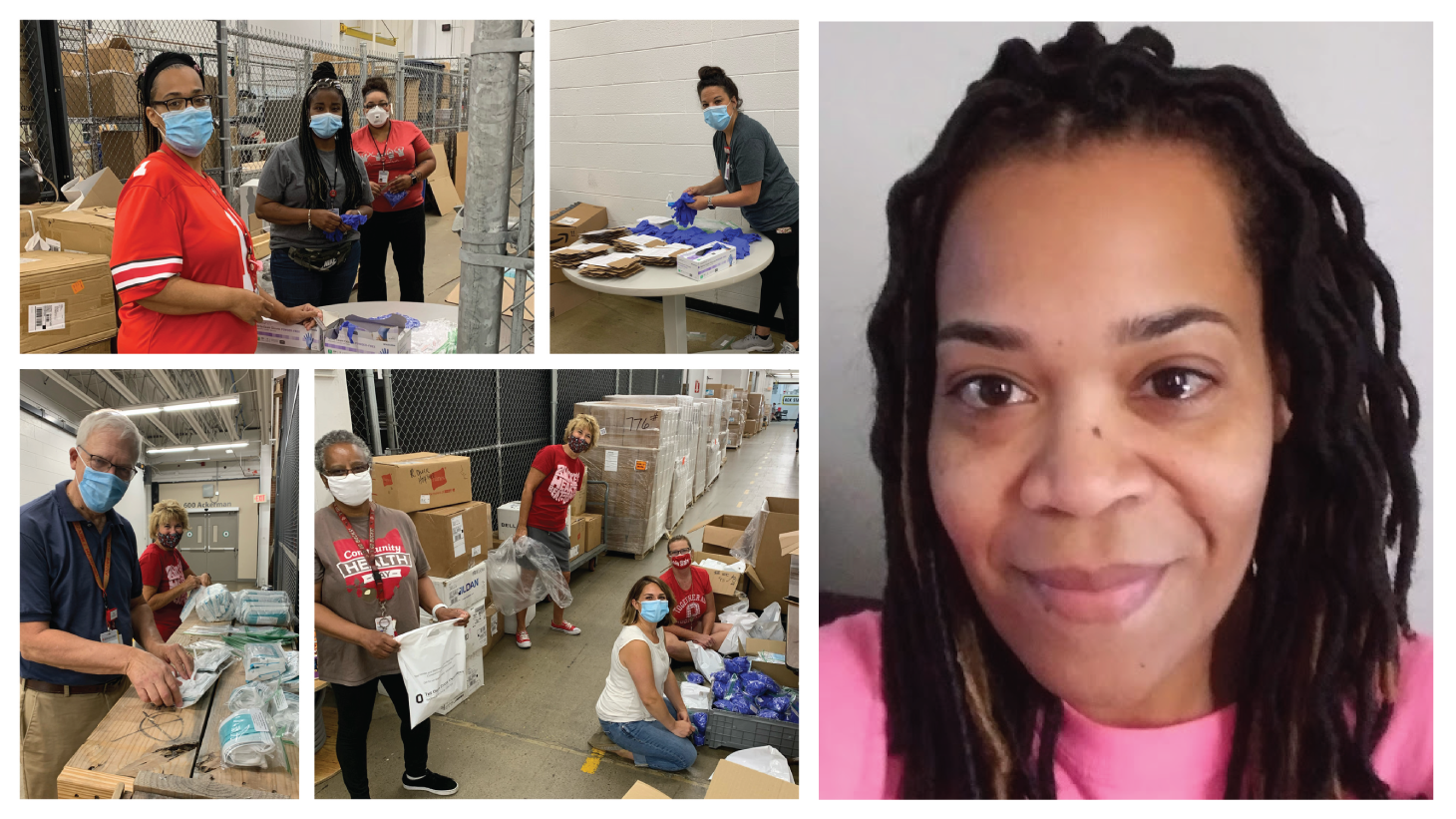
Leslie Hill, BS, CHW, CDCA
Community Outreach Coordinator, Community Health Worker
Ohio State Total Health and Wellness Primary Care ClinicOur clinic is actively involved in helping to reduce the spread of COVID-19 (and other communicable diseases) by giving away Personal Protection Equipment (PPE) in the form of PPE Care Kits. This is our largest outreach project as the ongoing need for resources exists during this pandemic. Nearly 6,000 PPE Care Kits have been distributed to community agencies, homeless shelters, schools, and public health locations. Our clinic staff assembles each kit with cloth and disposable face masks, disposable gloves, digital thermometers, hand sanitizers and disinfectant wipes. Educational material about COVID-19 as well as the importance of having a primary care health provider is also included.
Why is engaging the community important to you and your work?
It is important for me to gain knowledge and to share knowledge. The best way to gain knowledge about the community is to be out and about amongst the people. I like to speak with them and hear what their foremost concerns and needs are. I gain knowledge by seeing people in their environment and situations. Sharing knowledge with the community that could offer guidance and resources with the intentions to improve, educate, advocate and uplift; with hopes of lifting any barriers and progress can be made towards overcoming their concerns and needs.
What lessons have you learned from the community that have helped you as a university staff member?
I have learned of social barriers to health care while interacting with the community. Transportation, jobs, food instability, worries about housing and utilities and health insurance are common needs that are not being met for most of the community that Ohio State Total Health and Wellness Primary Care Clinic serves. It helps to learn what resources or services people need access to so that we can work to link them and bridge the gaps for them.
What has been your favorite moment from your community-engagement work?
I love the public! So being around people, sharing information and our PPE Care Kits is a nice way to talk to them, see smiles and build partnerships with other organizations. My favorite moment was sharing our care kits with a local food pantry who was very happy to finally have face masks to give their patrons. They had received several inquiries and requests for disposable face masks but could not supply any. It was a great feeling to see how our outreach helped their mission as well as fulfill an immediate need during this pandemic.
What advice do you have for other staff members who are interested in getting involved in community engagement?
As long as you have it in your heart to help others, there is an opportunity for community engagement. Find a need, start with a small outreach project, and offer it to a community group, an organization, or a school. It could be a few hours of your time or donated items that would help a cause. If everyone does a little bit, it will make a lot of difference for the community as a whole.
- January 2022: Sophia Leissa & Jillian Randolph, The Aspire Study
-
Can you tell us what The Aspire Study is and what your roles are?
The Aspire Study is a NINR funded project seeking to reduce cardiovascular disease risk in young Black and Hispanic adults through a culturally and environmentally tailored mobile health intervention. The intervention employs students from the Nurse Health Coaching Certificate program/Health Wellness Innovation minor to send participants a daily text message incorporating their real-time diet and physical activity data to make suggestions for meals, workouts, and stress reduction.
Sophia L: I’m the Program Assistant for the study. In my role I develop recruitment strategies and focus on the retention of study participants.
Jillian R: I’m the Project Coordinator. I manage the daily operations, ethical and budgetary compliance, investigator meetings, and the study’s community advisory board.
Columbus State Community College is a community partner on the study. Can you tell us more about their involvement?
We have established a Community Advisory Board (CAB) consisting of students, faculty, staff, and alumni from Columbus State (CState) to help guide our implementation and ensure our intervention is responsive to student needs. They have helped us create new text messages for local food options and menus, ensured we have a presence at school wide events and on media platforms, and connected us with various student services within the community so that our students are able to thrive in school, our study, and in life. We are also prioritizing mutual benefit with our CAB and with the CState community at large – we are working with our CAB to explore other research/community-based projects of interest to them and will also be planning events in the future to disseminate our preliminary findings and hold discussions on what health and wellness means and looks like in Black and Brown communities.
What has been your favorite moment while doing your work?
Our favorite moments while doing this work has been being able to witness the progression of students throughout their time within the study. Some participants seemingly transform throughout the year they spend in the study. We have both been able to witness participants' self-confidence, overall happiness, and health habits drastically improve over the course of 12 months as they work on their mental health, exercise, and nutrition. It has been an honor for them to allow us this small window into witnessing this progression and being able to cheer them along as they reach many goals they thought would be unattainable at the start of the study!
What lessons have you learned from the community that you would like to pass on to others in this field?
One lesson that we learned from the community that we would like to pass on to others within the field is being responsive to the needs of the community at each stage of the research progress. As we began the process of enrolling students into the study, we found that there was a need for mental health referral services to adequately support participants throughout their time within the study and beyond. This sentiment was echoed by our Community Advisory Board who was able to provide valuable information about the existing services available to students and gaps in resources. After implementing a referral process for students who screened positively for depressive symptoms, we received positive feedback from the students, some even claiming they would have never thought to seek out services prior to participating in the study. We learned how valuable it is to adapt and innovate upon program implementation to address the needs of the community that become apparent at every stage of the research process.
For more information about The Aspire Study please see below:
- Recruitment paper: https://link.springer.com/article/10.1007/s11524-021-00569-4
- https://clinicaltrials.gov/ct2/show/NCT04412954?term=janna+stephens&draw=2&rank=
For questions, email Randolph.240@osu.edu
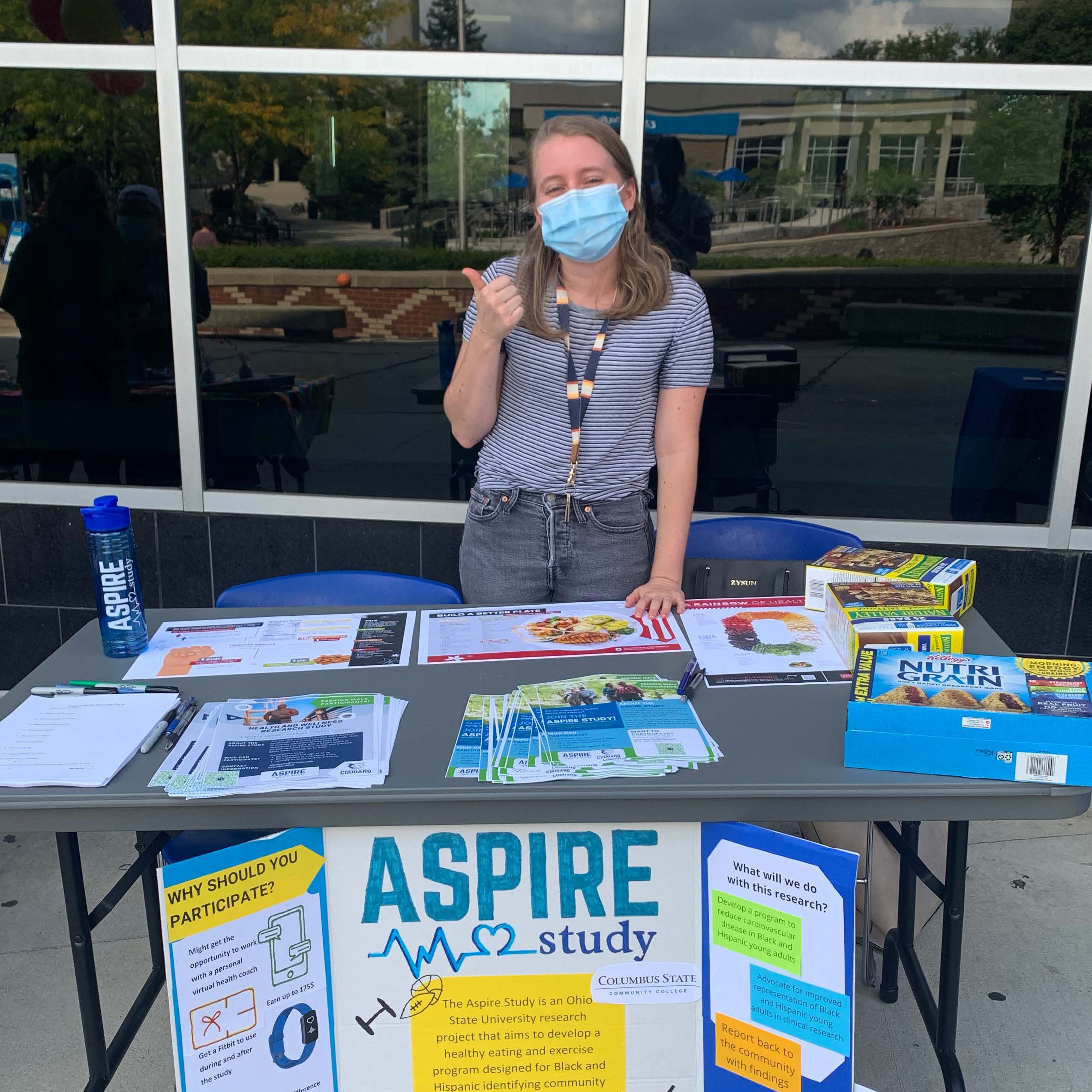 Sophia Leissa
Sophia LeissaSophia received her BA in Sociology from Willian & Mary in 2019 and is currently working towards her Master’s in Public Health at Ohio State. Her academic and career interests lie in this intersection, specifically understanding and addressing socioeconomic health disparities.
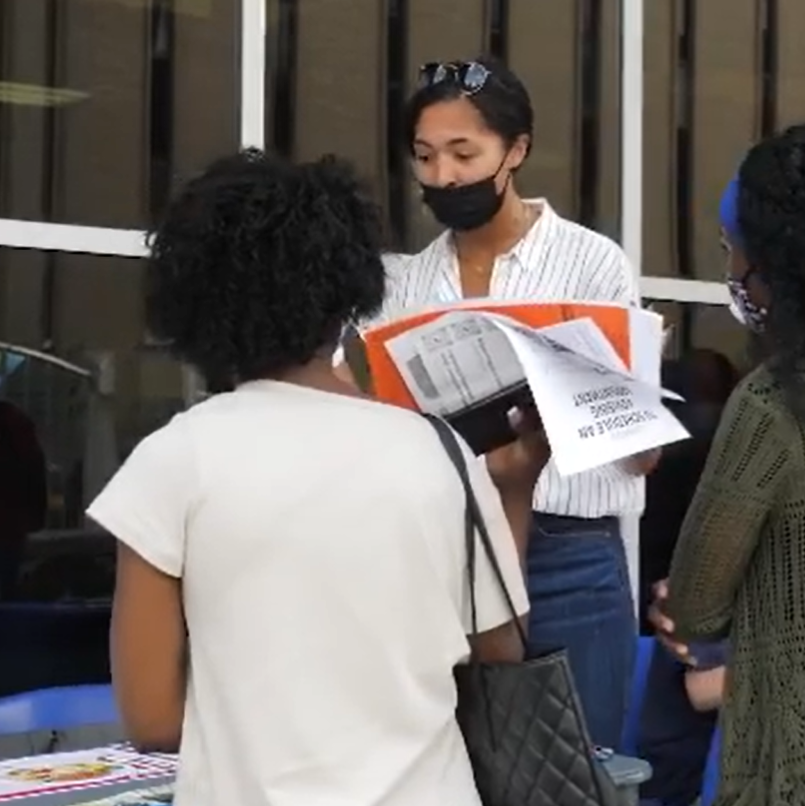
Jillian Randolph
Jillian graduated from the University of Virginia with a dual degree in Global Development Studies and English Literature in 2019. After graduation, she was a Princeton in Africa Fellow and moved to Dar es Salaam, Tanzania to work as a fundraising and grants management assistant for the largest provider of disability healthcare services in the country. She is currently pursuing her Master’s in Public Health at Ohio State and maintains a particular interest in the social determinants of health, health inequities, and knowledge generation and translation. She hopes to use the power of trans local and transnational collaborations as a catalyst to solve systemic health inequities worldwide.
- September 2021: Black Health Explained
-
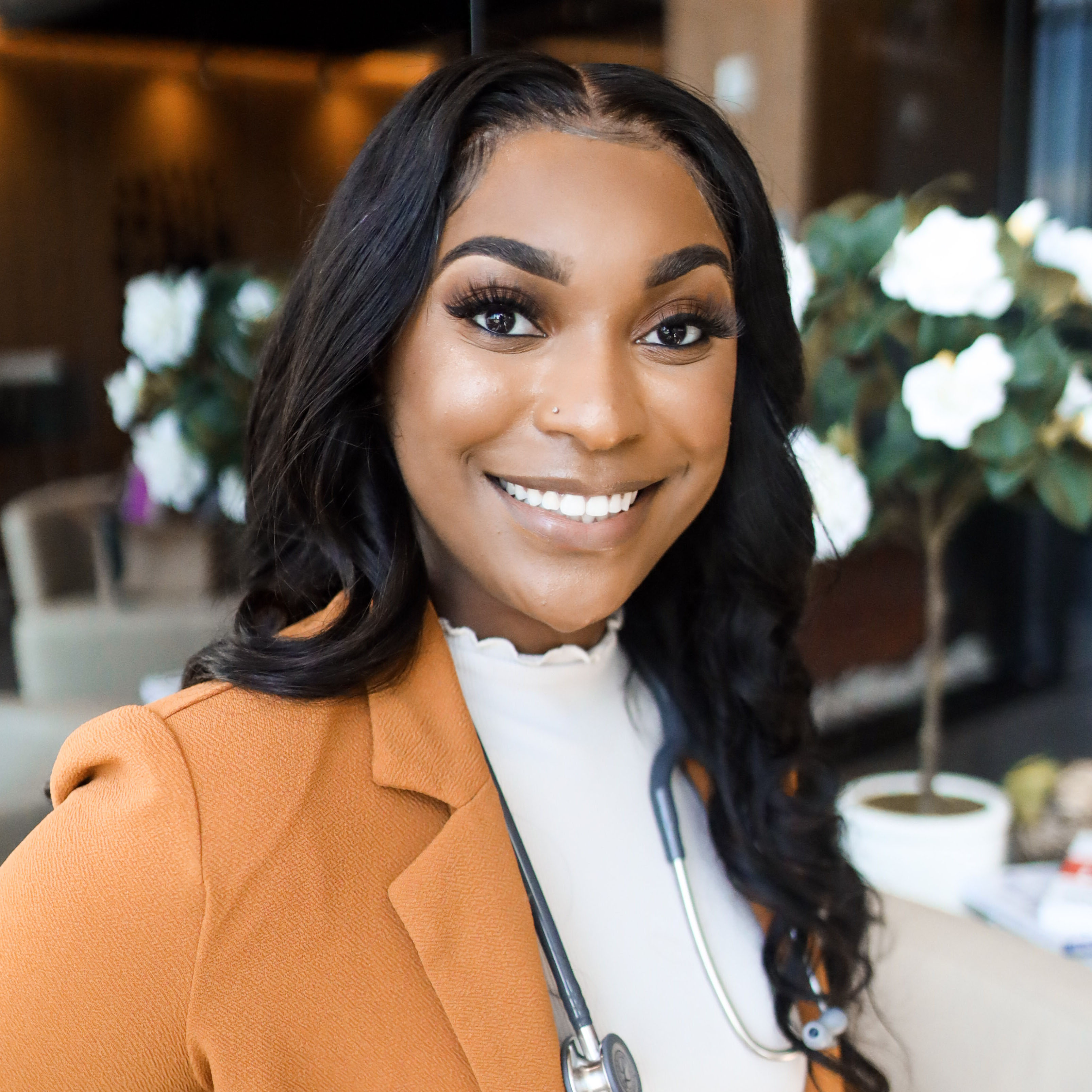 By way of Cleveland, OH, Faith Metlock is a senior at Ohio State studying nursing with a minor in pharmaceutical sciences and certificate in primary care. Outside of the classroom, Faith is president and founding member of Nursing Students of Color, a new student organization in the College of Nursing dedicated to creating safe spaces for minority nursing students.
By way of Cleveland, OH, Faith Metlock is a senior at Ohio State studying nursing with a minor in pharmaceutical sciences and certificate in primary care. Outside of the classroom, Faith is president and founding member of Nursing Students of Color, a new student organization in the College of Nursing dedicated to creating safe spaces for minority nursing students.Last year, in her role as Vice-President, Faith founded the Nursing Students of Color’s Mentorship program, where current nursing students are paired with pre-nursing students to support with pre-requisite courses and the application process for the BSN program. In her free time Faith manages, Black Health Explained, a health promotion platform she founded dedicated to the Black community with hopes of empowering her community to follow healthy lifestyle practices.
Black Health Explained (BHE) provides preventative care education through engaging infographics with simplified information posted regularly on social media and their website. The goal is to use these formats to engage community members and encourage them to follow healthy lifestyle practices that may reduce their risks of developing chronic health conditions, such as hypertension and diabetes, which disproportionally impacts the Black population. Since recently introducing video content onto their page, BHE has already reached over 3,600 accounts.
In the very near future BHE hopes to launch a YouTube channel that will feature videos on health topics with expert guest speakers. Faith also plans to add a searchable Black, healthcare provider directory onto the website.
For more information about Black Health Explained or Nursing Students of Color see below:
- BHE Instagram: @bhexplained
- NSC Instagram: @nsc_osu
- Ask a Buckeye Nurse
-
Faculty members Deborah L. Dawson, DNP, RN, and Elizabeth “Lizzie” Fitzgerald, EdD, APRN-CNS, PMHCNS-BC lead the Ask A Buckeye Nurse (ABN) outreach program that connects volunteer faculty and students from The Ohio State University College of Nursing with local barbershops and beauty salons to provide free health screenings, twice a month, during the academic school year. Volunteers engage with community members on the Near East Side of Columbus, Ohio. The goal of the program is to address barriers to health and wellness and reduce health disparities in African American adults. Additional community partners for the program include The Ohio State University Wexner Medical Center East Hospital and Making a Difference, Inc.
Screenings include blood pressure, blood glucose, BMI and stress levels. After screening, if an individual’s results indicate the need for a referral, participants are referred to their primary care provider or assisted in finding a healthcare provider. Health education materials are provided to help patrons gain a better understanding of potential health risks and learn ways to practice healthy lifestyle behaviors. In the spring of 2017, the program expanded its efforts to include two additional barber shops for a two-day “Barbers and Beauticians Who Care” event.
More than 1,100 individuals have undergone a screening through an Ask A Buckeye Nurse event since 2014. Although COVID-19 physical distancing precautions have made it difficult to provide in-person services, ABN has not stopped its efforts to provide resources to community members. The program partnered with the College of Nursing’s Office of Community Outreach and Engagement and the American Heart Association to create and distribute 300 packets of cardiovascular health information, along with masks and hand sanitizer for patrons of six partner barber and beauty shops in December 2020. Once able to resume in-person services, the Ask A Buckeye Nurse leaders plan to expand their efforts to include screening for cholesterol levels.
Ask A Buckeye Nurse Leadership
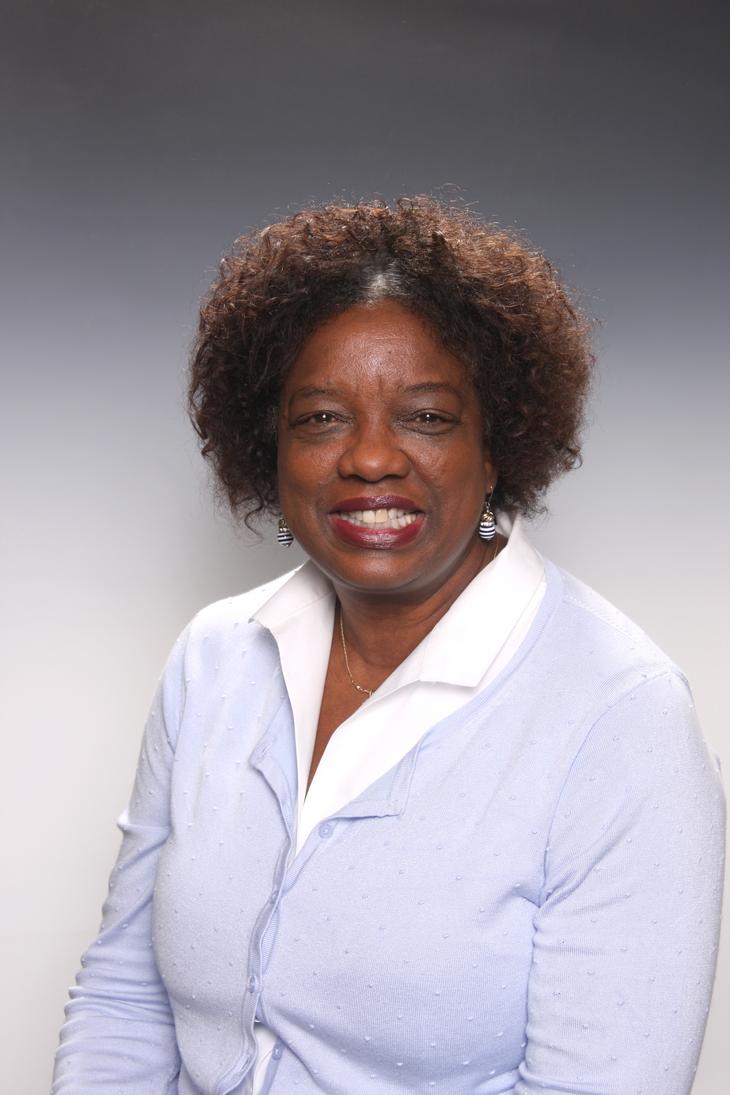 Deborah L. Dawson, DNP, RN, is an assistant professor of clinical practice at The Ohio State University College of Nursing, with more than a decade of teaching experience. Her nursing background is in critical care, research and parish/community nursing. She recently earned a Doctor of Nursing Practice (DNP) degree from Indiana Wesleyan University. Her DNP project, focused on improving cardiovascular health for African American adults, was entitled A Faith-Based Cardiovascular Educational Program to Improve Self-Care Behavior Risk Factors in African American Adults.
Deborah L. Dawson, DNP, RN, is an assistant professor of clinical practice at The Ohio State University College of Nursing, with more than a decade of teaching experience. Her nursing background is in critical care, research and parish/community nursing. She recently earned a Doctor of Nursing Practice (DNP) degree from Indiana Wesleyan University. Her DNP project, focused on improving cardiovascular health for African American adults, was entitled A Faith-Based Cardiovascular Educational Program to Improve Self-Care Behavior Risk Factors in African American Adults.Dr. Dawson embraces the Ask A Buckeye Nurse community educational model which supports heart health screenings to communities at high risk for cardiovascular disease. Participation in the Ask A Buckeye Nurse educational model inspired Dr. Dawson to continue the research for her doctoral cardiovascular educational program in African American adults. Her scholarship, practice and service in nursing have been rewarding in allowing her to empower individuals to engage in activities that promote health and wellness in low economic areas.
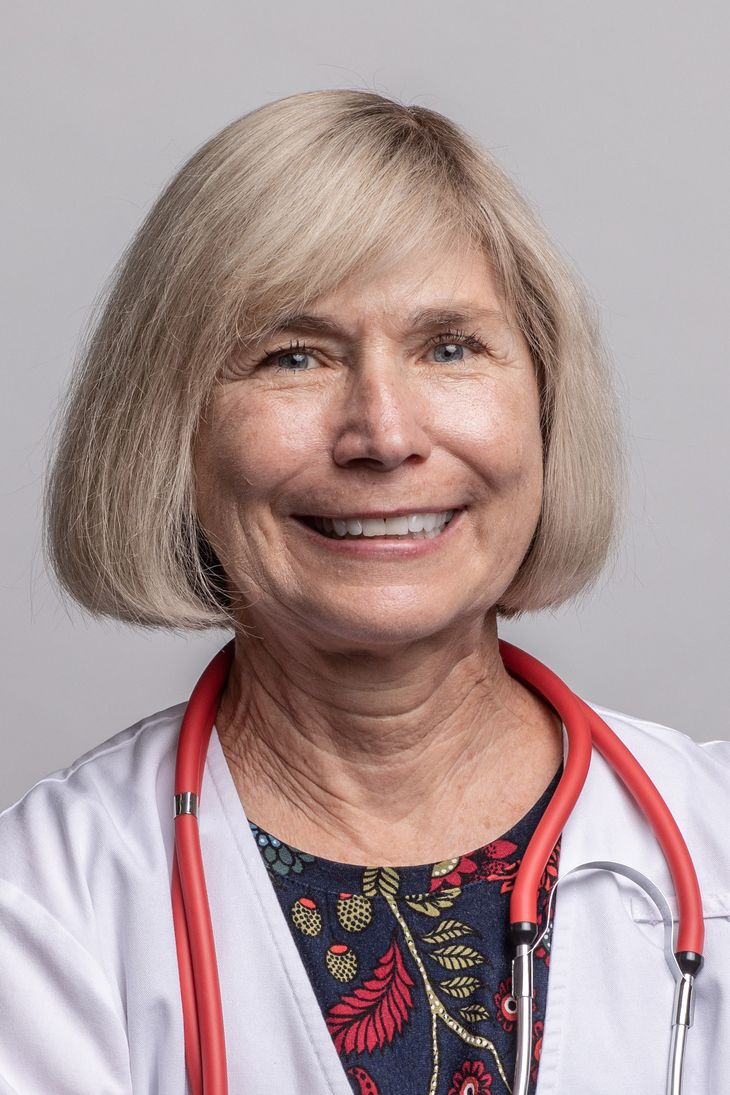 Dr. Elizabeth “Lizzie” Fitzgerald, EdD, APRN-CNS, PMHCNS-BC is an associate professor of clinical nursing at The Ohio State University College of Nursing, where she teaches in the graduate studies program. She is certified as a Clinical Nurse Specialist in Child and Adolescent Psychiatric Mental Health Nursing by the American Nurses Credentialing Center. She is a Fellow in the American Association on Intellectual and Developmental Disabilities and holds the distinction of Scholar in the Transcultural Nursing Society. Her scholarship and practice focuses on improving access to healthcare and striving to attain health equity by addressing multiple layers of a person’s life that reflect social marginalization.
Dr. Elizabeth “Lizzie” Fitzgerald, EdD, APRN-CNS, PMHCNS-BC is an associate professor of clinical nursing at The Ohio State University College of Nursing, where she teaches in the graduate studies program. She is certified as a Clinical Nurse Specialist in Child and Adolescent Psychiatric Mental Health Nursing by the American Nurses Credentialing Center. She is a Fellow in the American Association on Intellectual and Developmental Disabilities and holds the distinction of Scholar in the Transcultural Nursing Society. Her scholarship and practice focuses on improving access to healthcare and striving to attain health equity by addressing multiple layers of a person’s life that reflect social marginalization.Dr. Fitzgerald has been working with Ask A Buckeye Nurse since August 2014. She became involved because she wanted to engage with a community project to improve the health and well-being of urban community members. She also wanted to join a project that had the potential to be sustained, as trust is so important between academic institutions and communities when doing community engagement efforts. Ask A Buckeye Nurse was a perfect opportunity to serve the community and help to promote health and well-being among persons living in the Near East Side of Columbus.
After four decades of teaching in higher education, Dr. Fitzgerald will be retiring on June 1, 2021. During her retirement, she plans to focus on tutoring English for Speakers of Other Languages who wish to learn or improve their English language skills; promoting the development of intercultural competence among healthcare professionals; and volunteering in Latinx communities to improve health equity in the United States and Latin America.
- Timiya Nolan
-
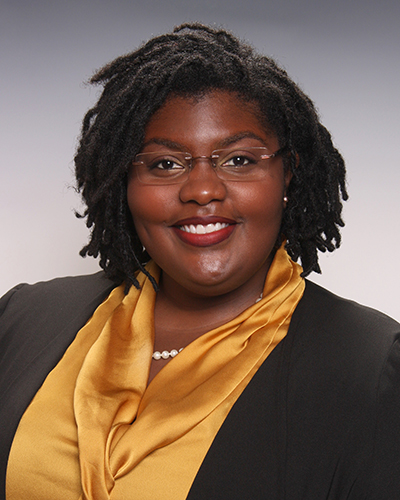 Timiya S. Nolan, PhD, APRN-CNP, ANP-BC, is a research nurse who focuses on improving the quality and length of life in the African American community. Her inspiration for becoming a champion of health equity stems from her experiences in research and the nursing field. As Nolan worked and studied, she could not overlook the disproportionate amount of African Americans suffering from cancer, heart disease, obesity, and poor social determinants of health. Her mission to improve the health and wellness of the African American community by developing two interventions focused on disrupting the correlation between race and poor health outcomes.
Timiya S. Nolan, PhD, APRN-CNP, ANP-BC, is a research nurse who focuses on improving the quality and length of life in the African American community. Her inspiration for becoming a champion of health equity stems from her experiences in research and the nursing field. As Nolan worked and studied, she could not overlook the disproportionate amount of African Americans suffering from cancer, heart disease, obesity, and poor social determinants of health. Her mission to improve the health and wellness of the African American community by developing two interventions focused on disrupting the correlation between race and poor health outcomes.The first of these interventions, called Y-AMBIENT, (Young African American Breast Cancer Survivorship Intervention), provides survivors of breast cancer with self-management strategies to improve quality of life. Breast cancer survivors are connected with nurse interventionists and coached in developing goals focused on personal concerns, such as diet, exercise, prayer/meditation and socialization. Participants are given information and support based on their choices, ensuring they are in full control of the process. This innovative approach toward regaining health and wellness after such a demoralizing disease has been recognized by the Gulf States Young Breast Cancer Survivorship Network, Young Survival Coalition and Susan G. Komen®.
Nolan is also collaborating with Darrell M.Gray, MD, MPH, and Joshua J. Joseph, MD, from the Ohio State College of Medicine, and the African American Wellness Agency on a project targeting African American men, who are at a higher risk than their counterparts for premature death. This grant-funded intervention was adapted from the highly reputable American Diabetes Association’s Diabetes Prevention Program and American Heart Association’s (AHA) Check Change Control program. By providing connections to primary care, individualized counseling and health coaching on the AHA’s “Life’s Simple 7®” metrics (blood pressure, glucose, cholesterol, weight, diet, physical activity and smoking status), this program has the potential to overcome a great number of obstacles toward equitable health established through societal boundaries. Nolan and colleagues have secured an impressive number of partners (e.g., the American Diabetes Association® (ADA), AHA, Columbus Parks and Recreation, Columbus YMCA, Columbus Public Health Department, African American Male Wellness Agency, The Ohio State University, etc.) in this initiative and continue to make great strides in their research and implementation.
Nolan is truly committed to correcting societal failures in health equity and wellness for the African American community. She is a testament to what exceptional dedication, meticulous planning and adaptability can achieve. We are honored to feature her in the College of Nursing Office of Community Outreach and Engagement’s Spotlights.
